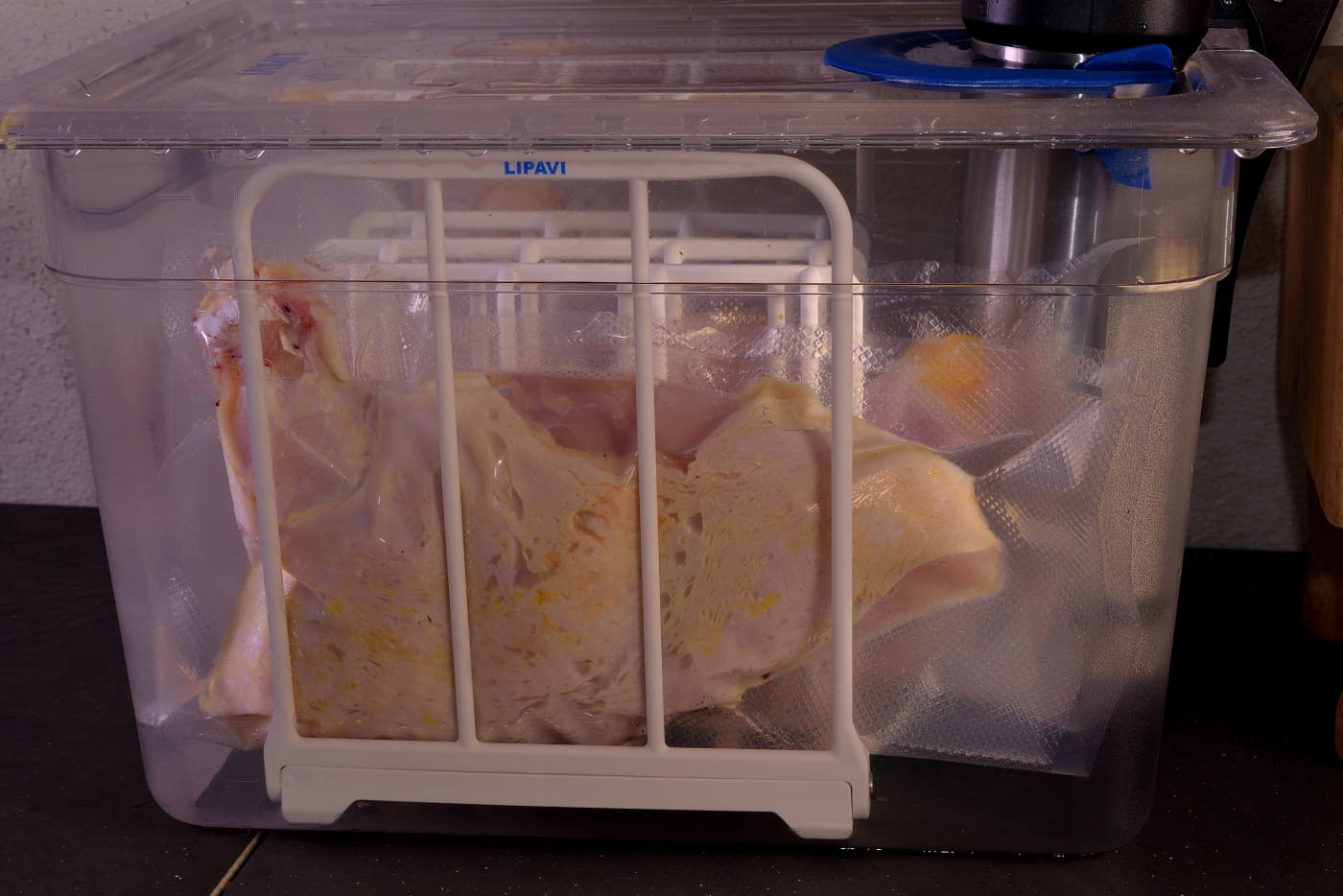
Above: Lipavi C10 container, N10 polycarbonate racks. Lipavi C10L-UNIR lid.
Actual prep time, 2 hours
Serves 2+
Level of difficulty: 3.25
Procedure:
Preheat the sous vide bath to 132 F/56 C. Vacuum seal the chicken in heat rated sous vide bags and process for 6 hours. When the interval has elapsed, submerge the packages in iced tap water until they achieve 70 F/21 C–approximately half an hour. Refrigerate at 40 F/4 C for at least two hours before proceeding. The sealed packages can be stored at 40 F/4 C for at least two weeks without sacrificing quality or wholesomeness. Try that with a fresh chicken!
Day of service:
Stage a large platter into your oven set to approximately 145 F/63 C (warming function) to heat.
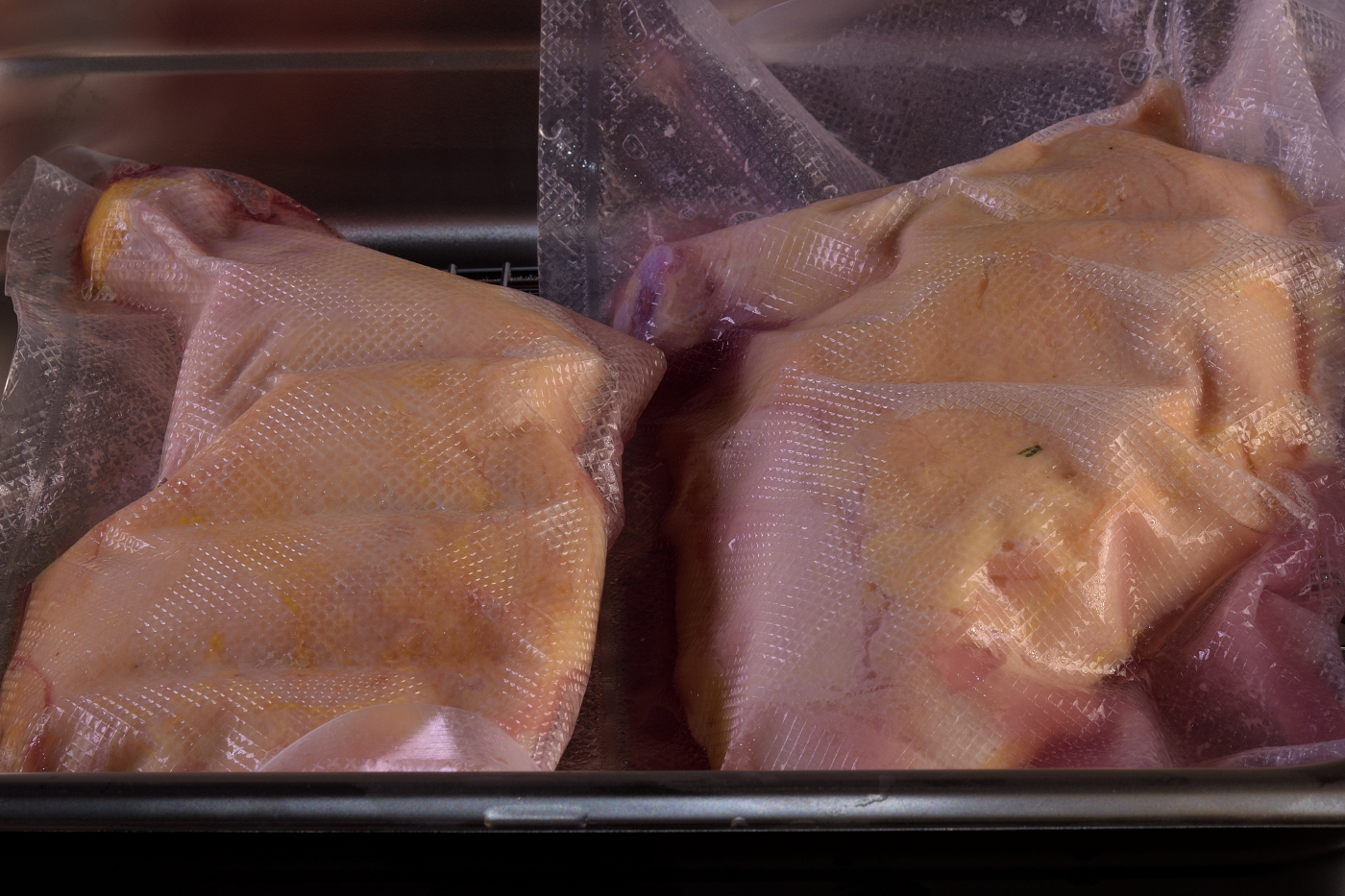
Dip the sealed packages in hot tap water (or a sous vide bath) for two minutes to melt the gel. At 132 F/56 C, there should be very little juice in the pouch. The higher the temperature, the greater the amount of release there will be. Some enthusiasts are hesitant to use so low a temperature–if there is a significant amount of juices in the bag, click HERE to see how to make use of them.
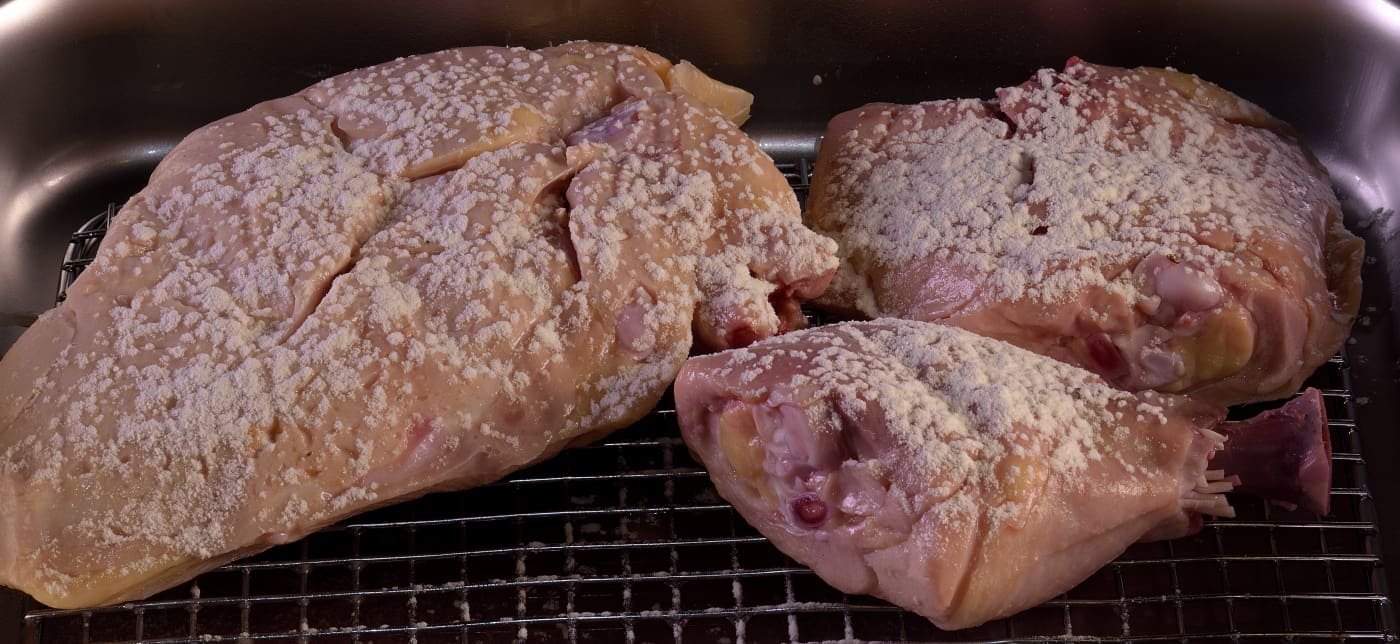
Place the chicken on a rack in a pan. Turn the chicken skin side down and dust with powdered egg white. Fresh egg white mixed well with an equal amount of water may also be used.
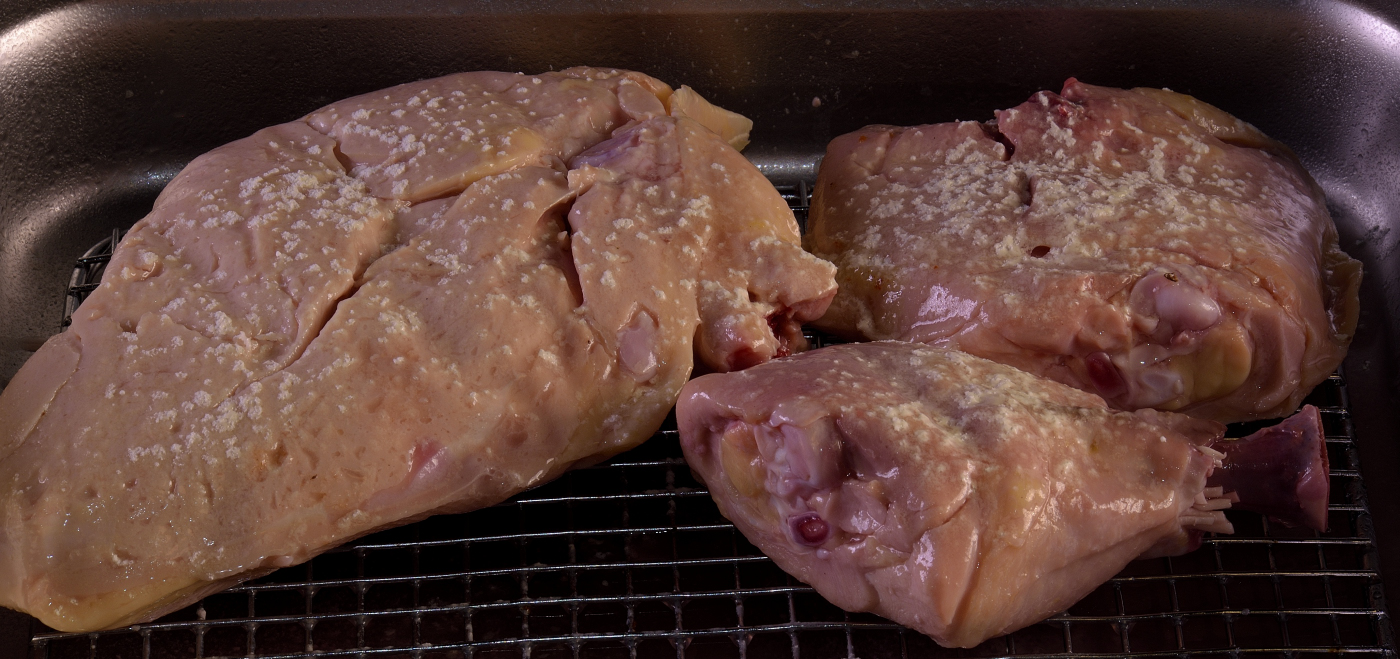
Use a spray bottle to moisten the egg whites–not necessary if you use fresh.
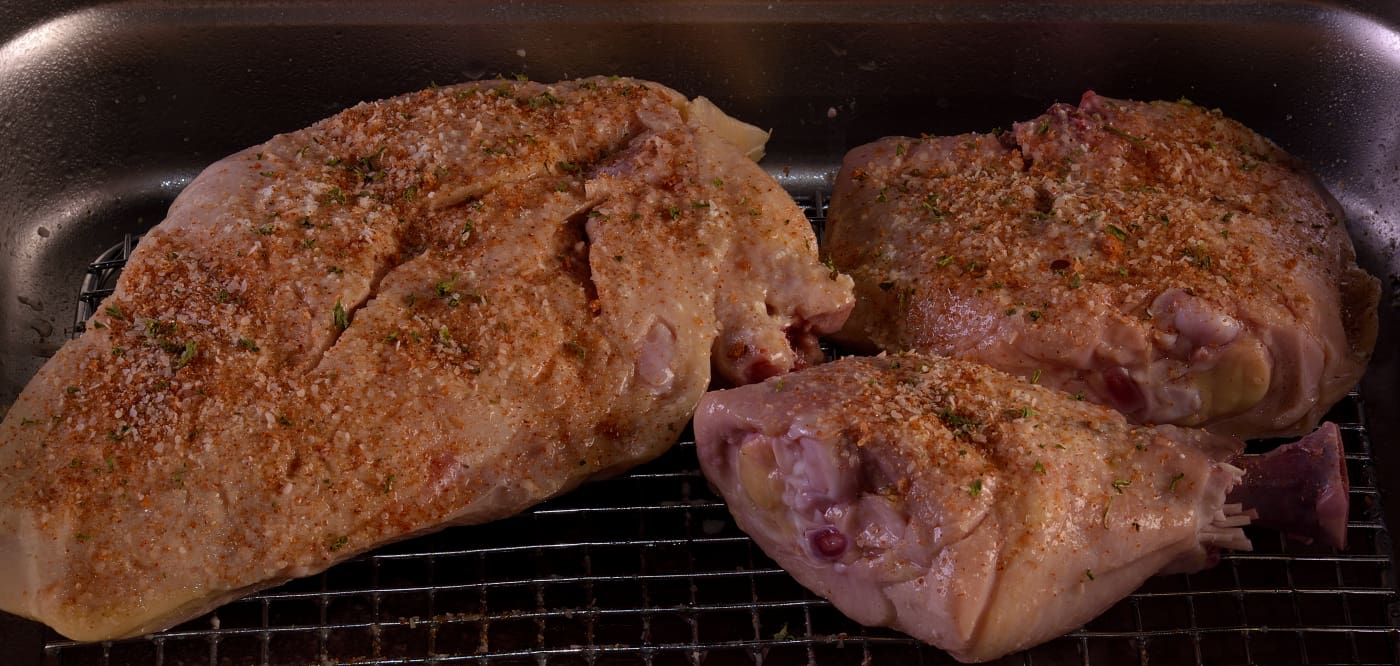
Sprinkle with desired seasonings–this simple model utilized kosher salt, paprika and dried parsley.
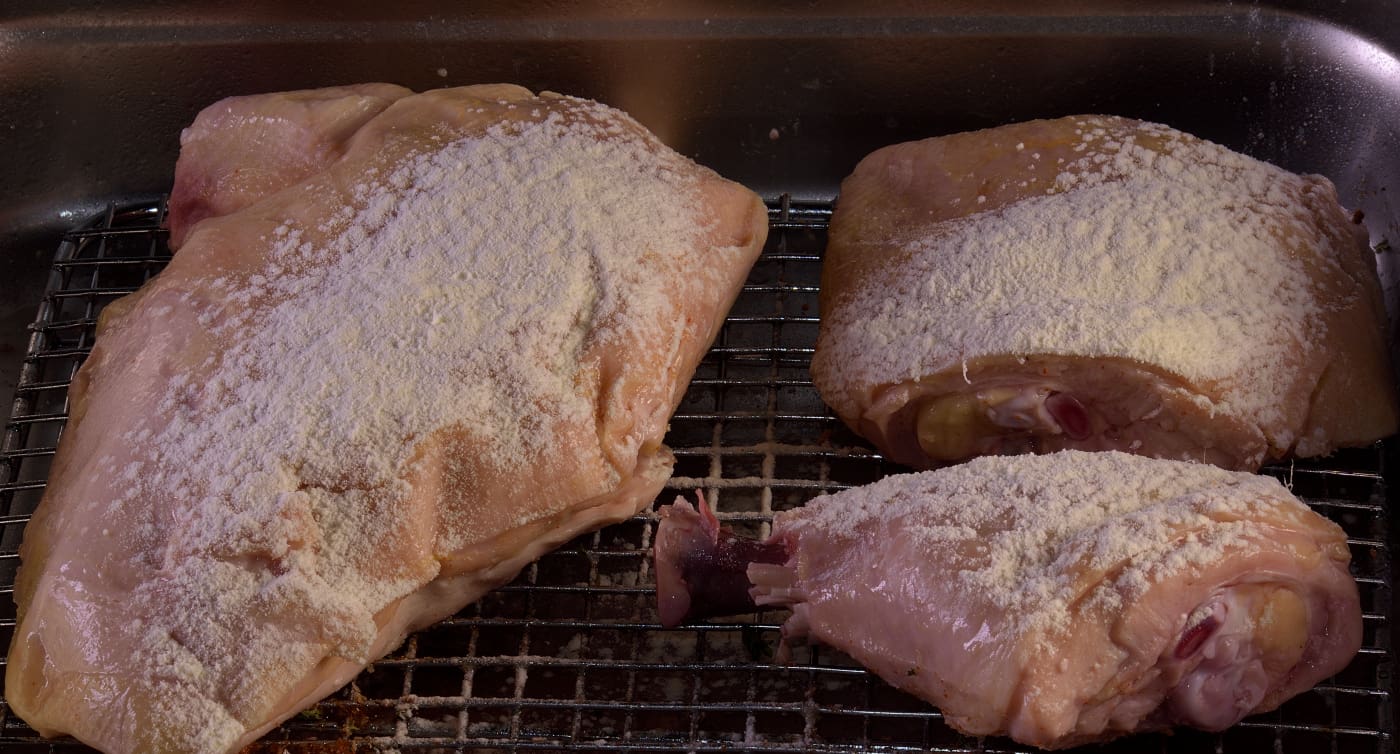
Turn the pieces of chicken over and repeat the seasoning process.
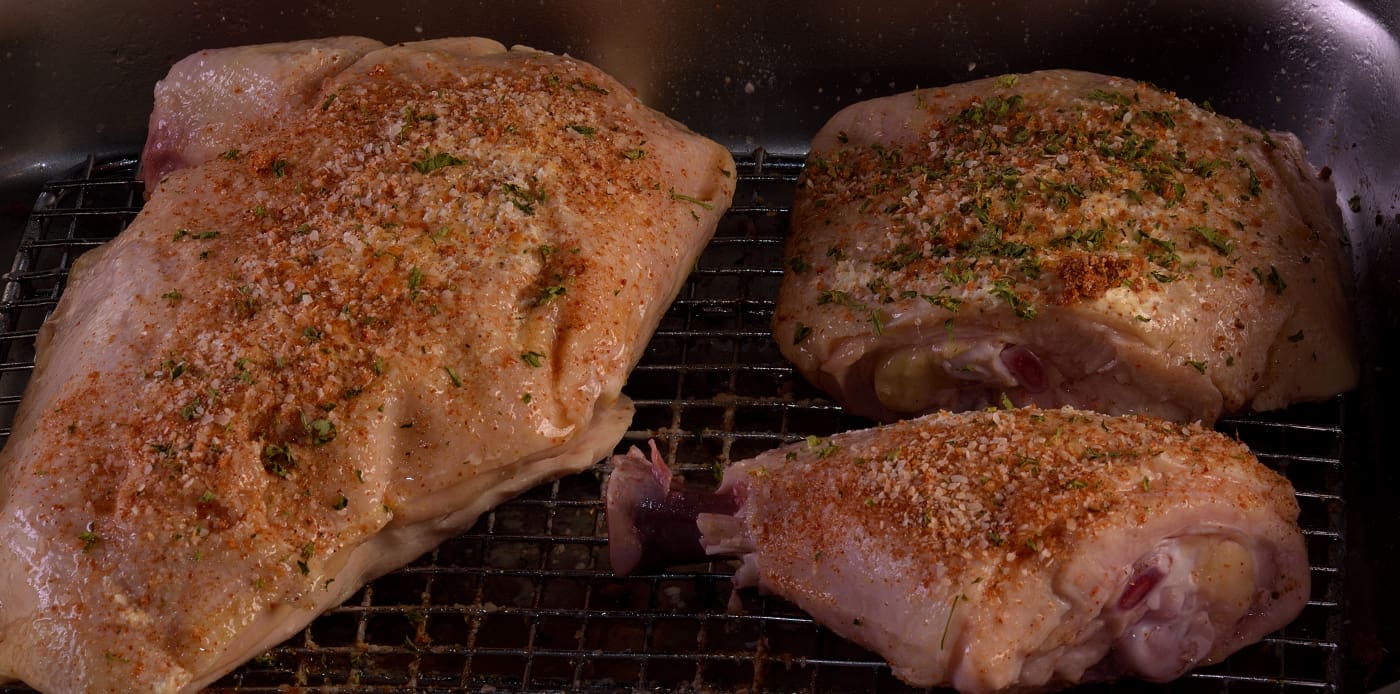
Mist the skin side with aerosol oil spray and refrigerate at 40 F/4 C for 30 minutes to allow the seasonings to cling.
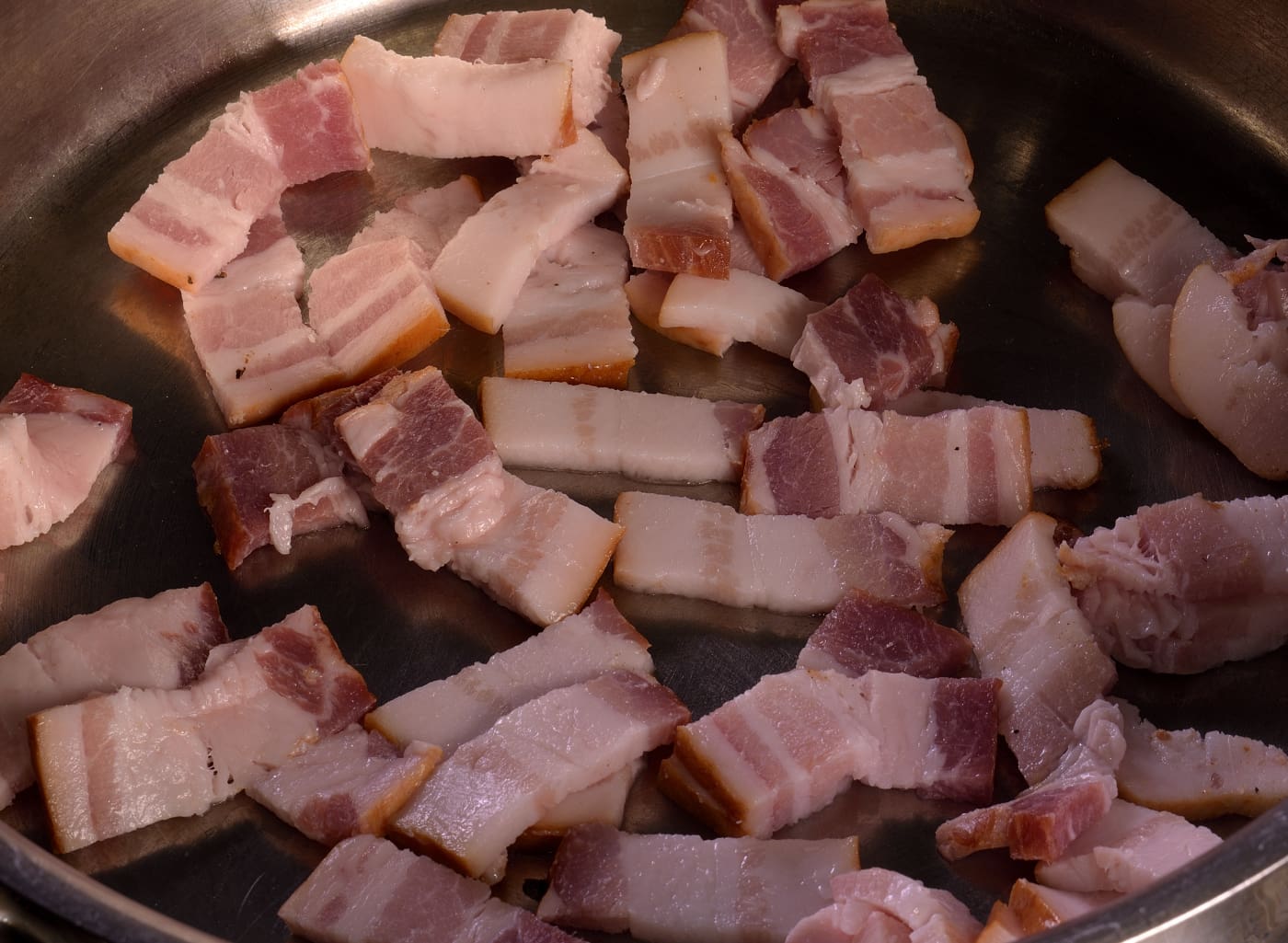
Cut the bacon into small pieces and add to a cold skillet.
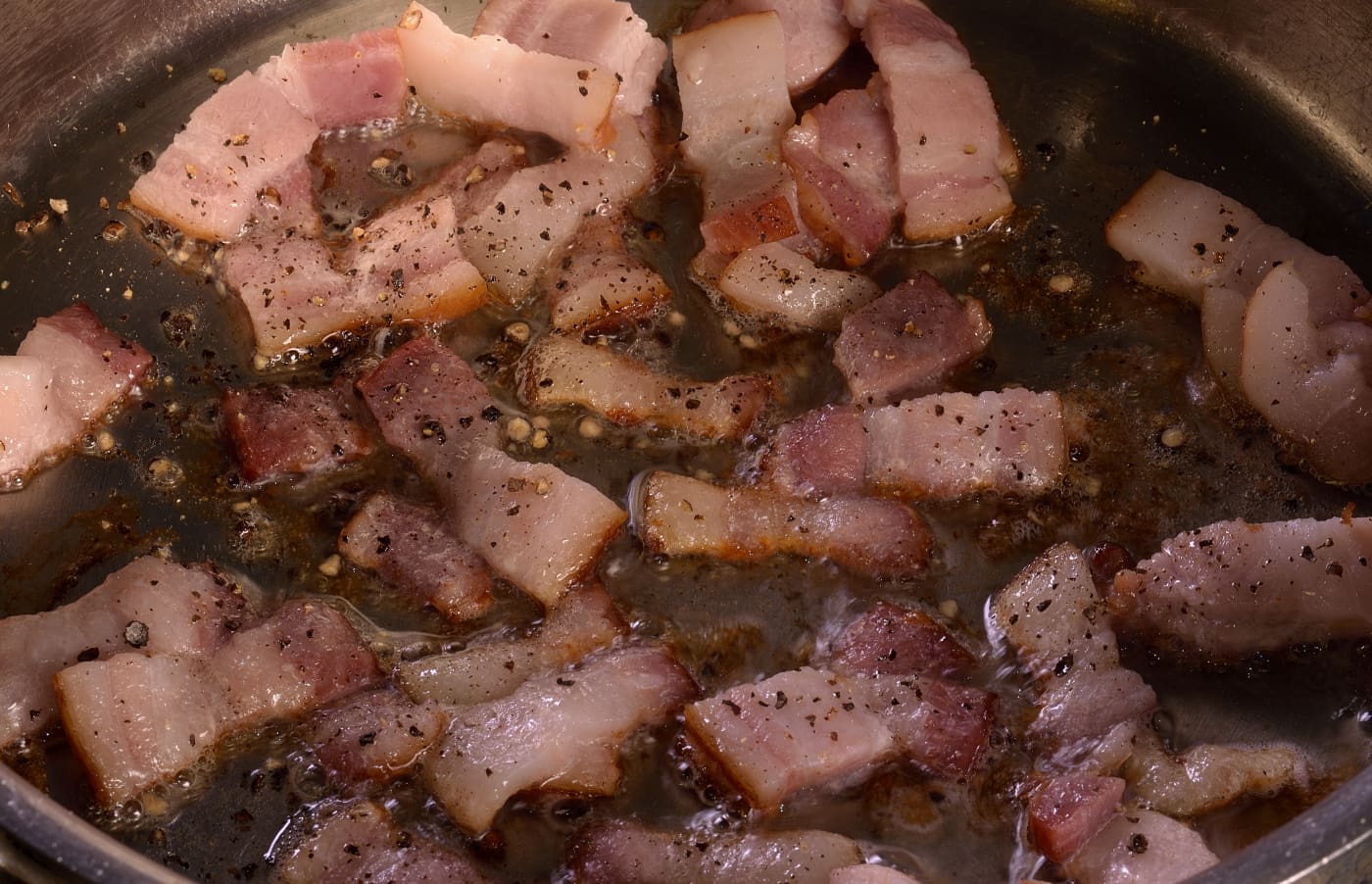
Grind black pepper over the bacon. Use an infrared thermometer to gauge the burner to (250 F/121 C)–hot enough to sizzle but not hot enough to pop.
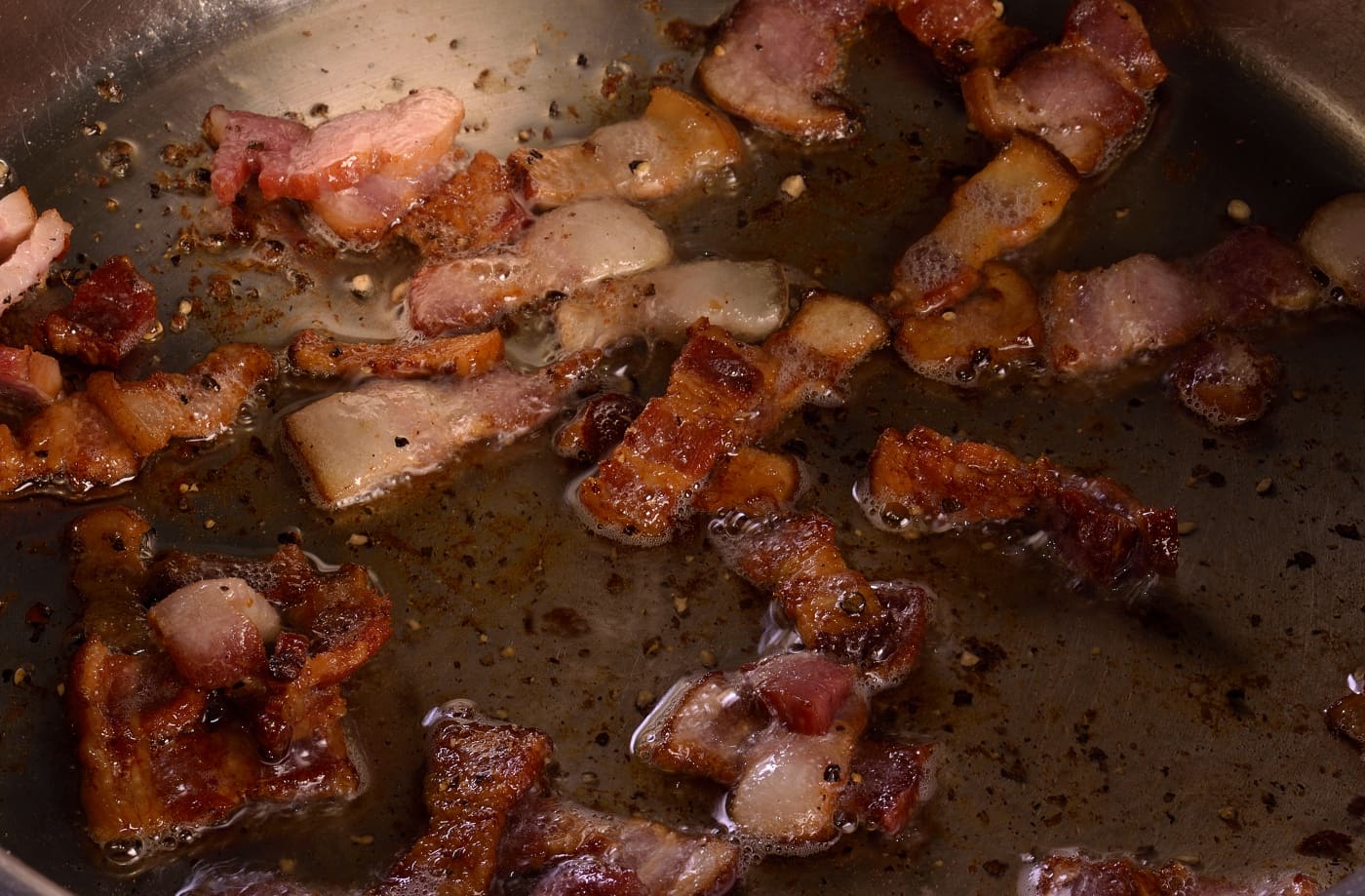
Fry the bacon until browned on all sides and crisp. Remove from pan and set aside.
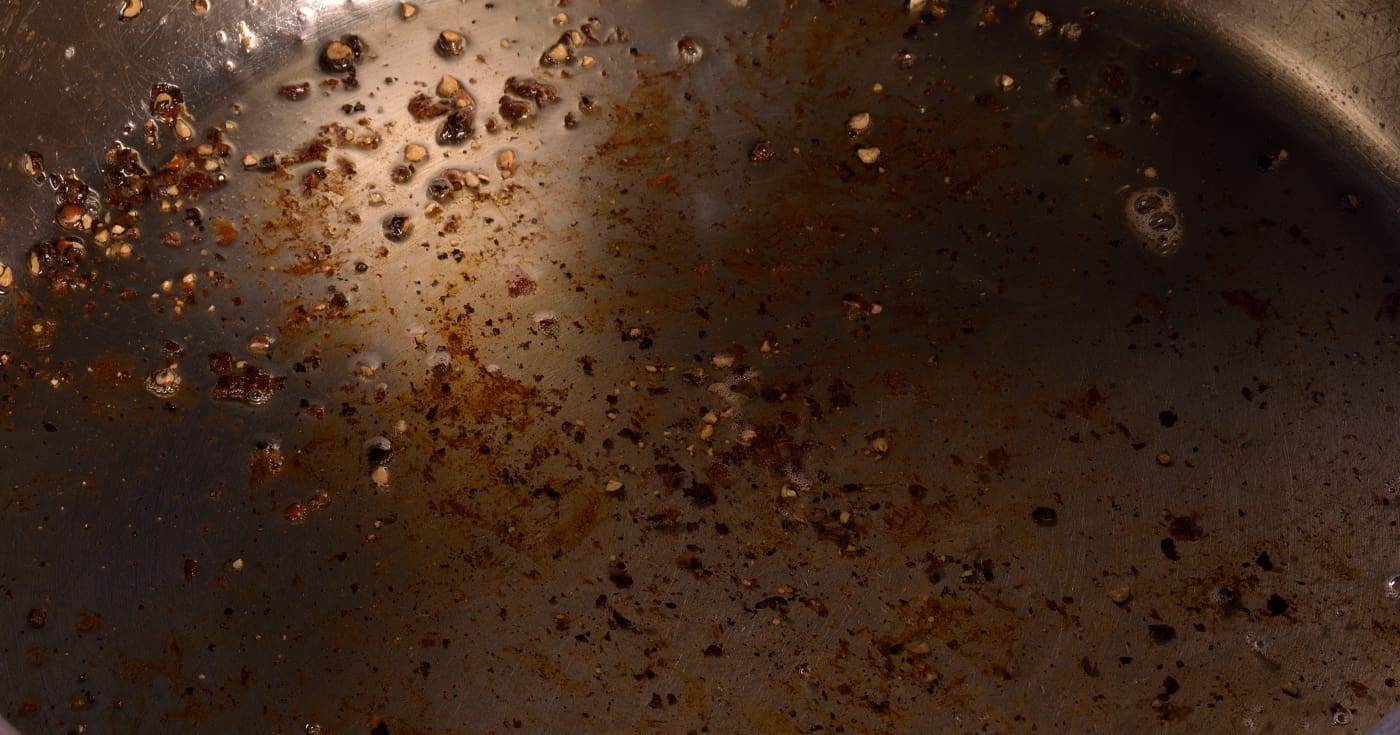
Make sure there is enough fat to cover the bottom of the pan.
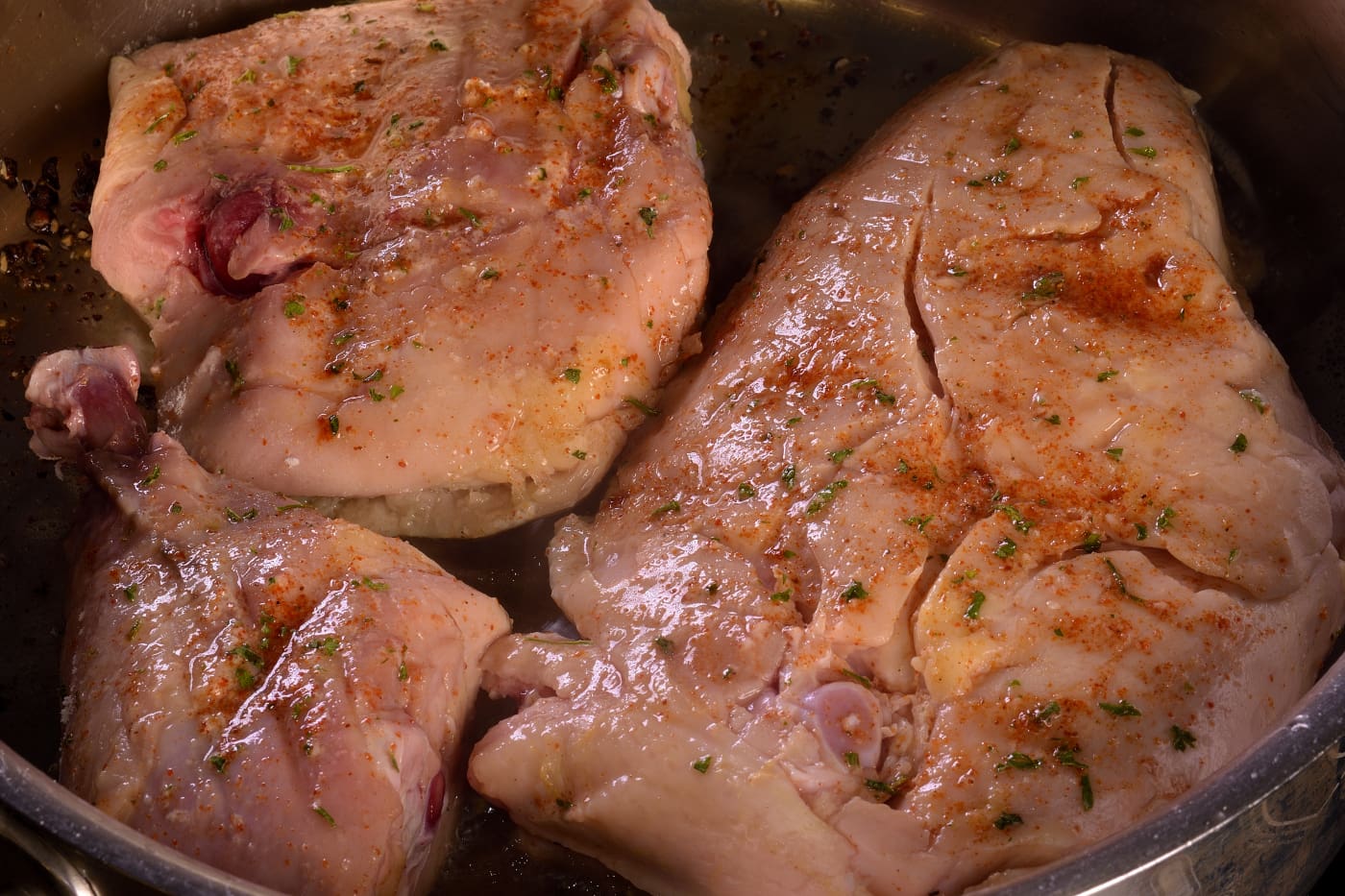
If desired, the skin side of the chicken may be dredged in a light coating of flour. This helps prevent sticking and scorching. Add the chicken to the pan, skin side down. Allow at least ten minutes to fully render the surface.
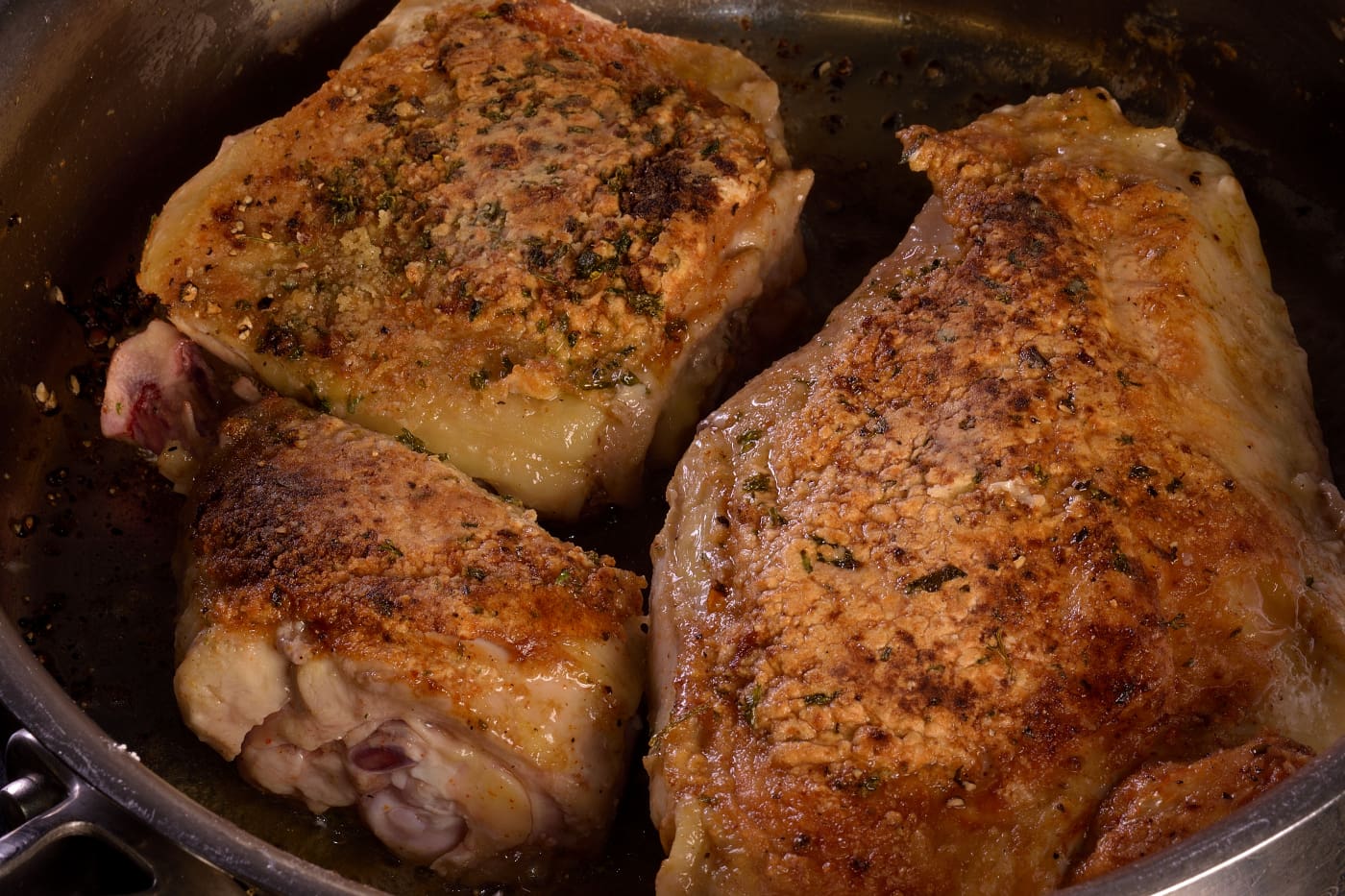
Turn the chicken over and continue browning.
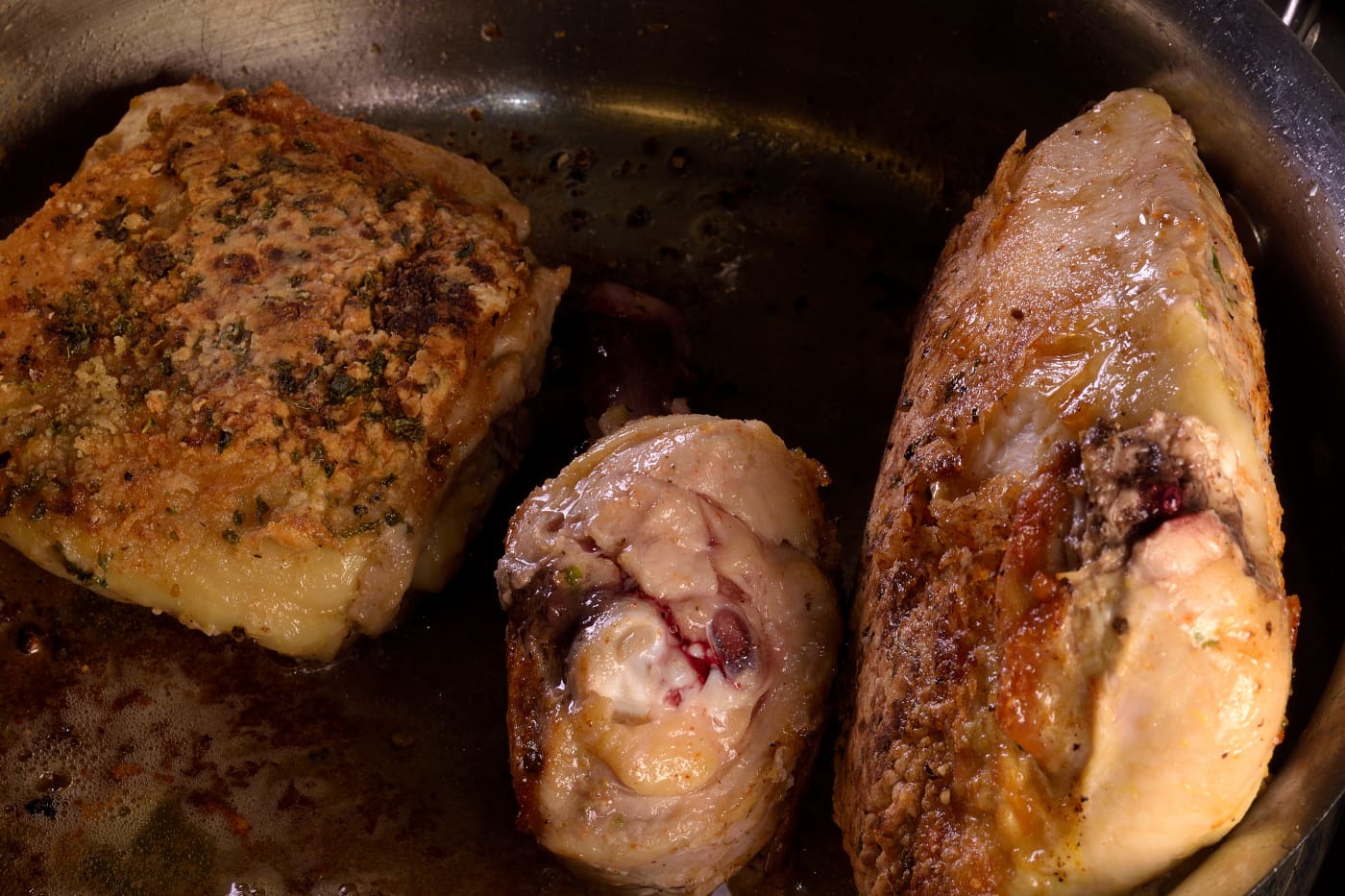
Stand the pieces of chicken on their sides to assure equal searing on all sides.
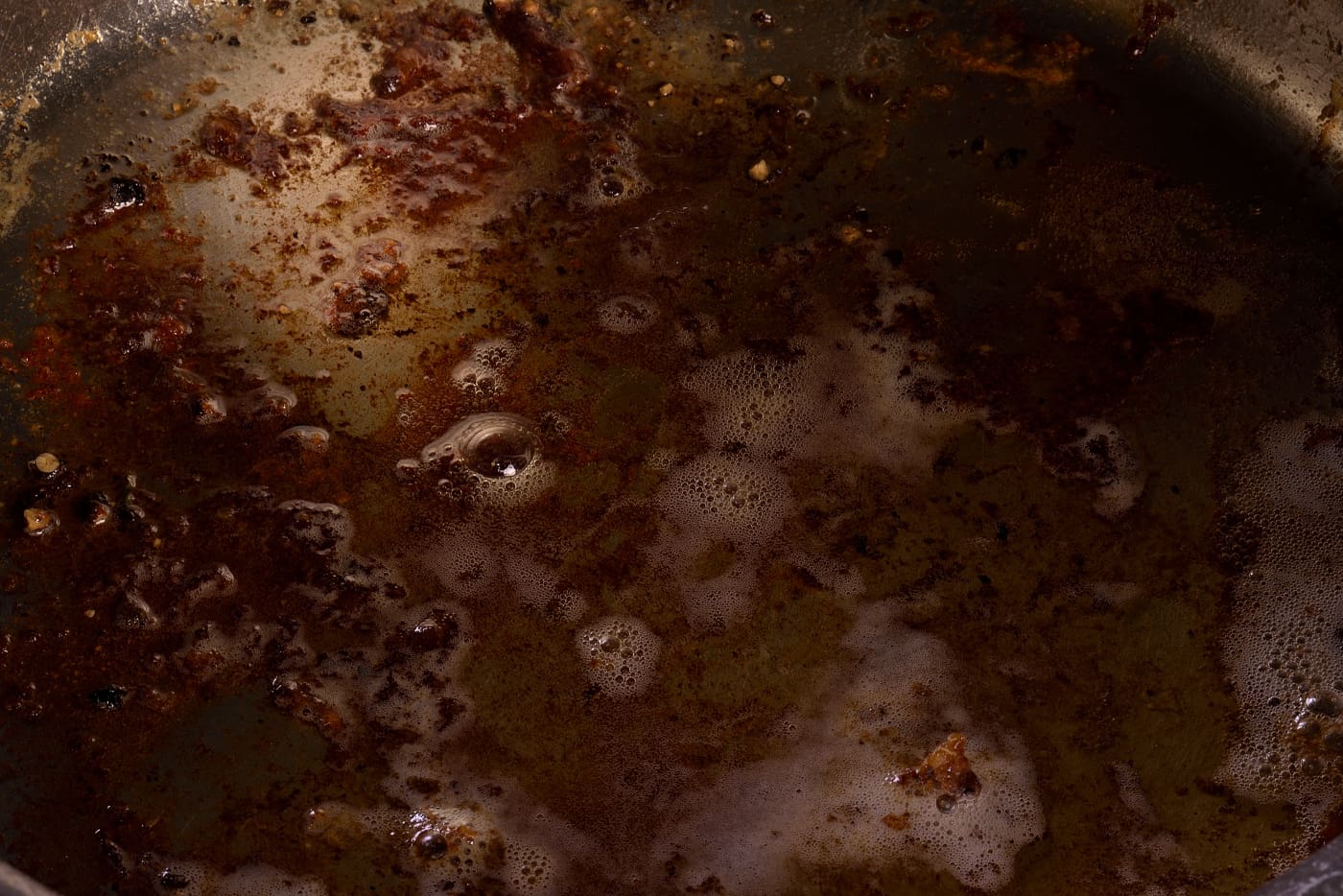
Remove the chicken to a screen in a pan and stage into the warming oven at 145 F/63 C.

Add 3 oz./90 g sliced mushrooms to the pan.

Sauté until softened.
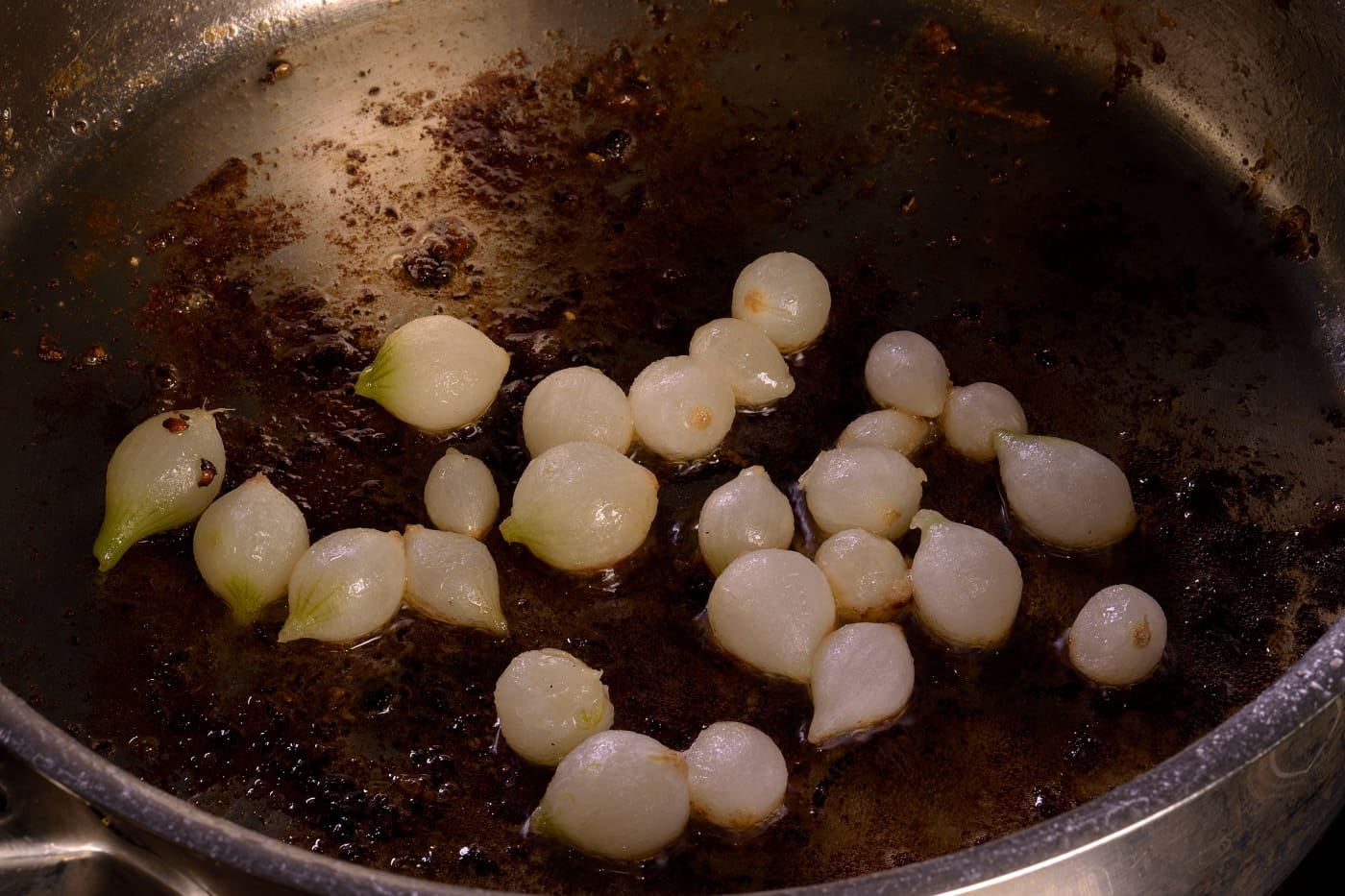
Remove the mushrooms and set aside. Add the pearl onions to the pan.

Brown well and add to the mushrooms that you set aside.
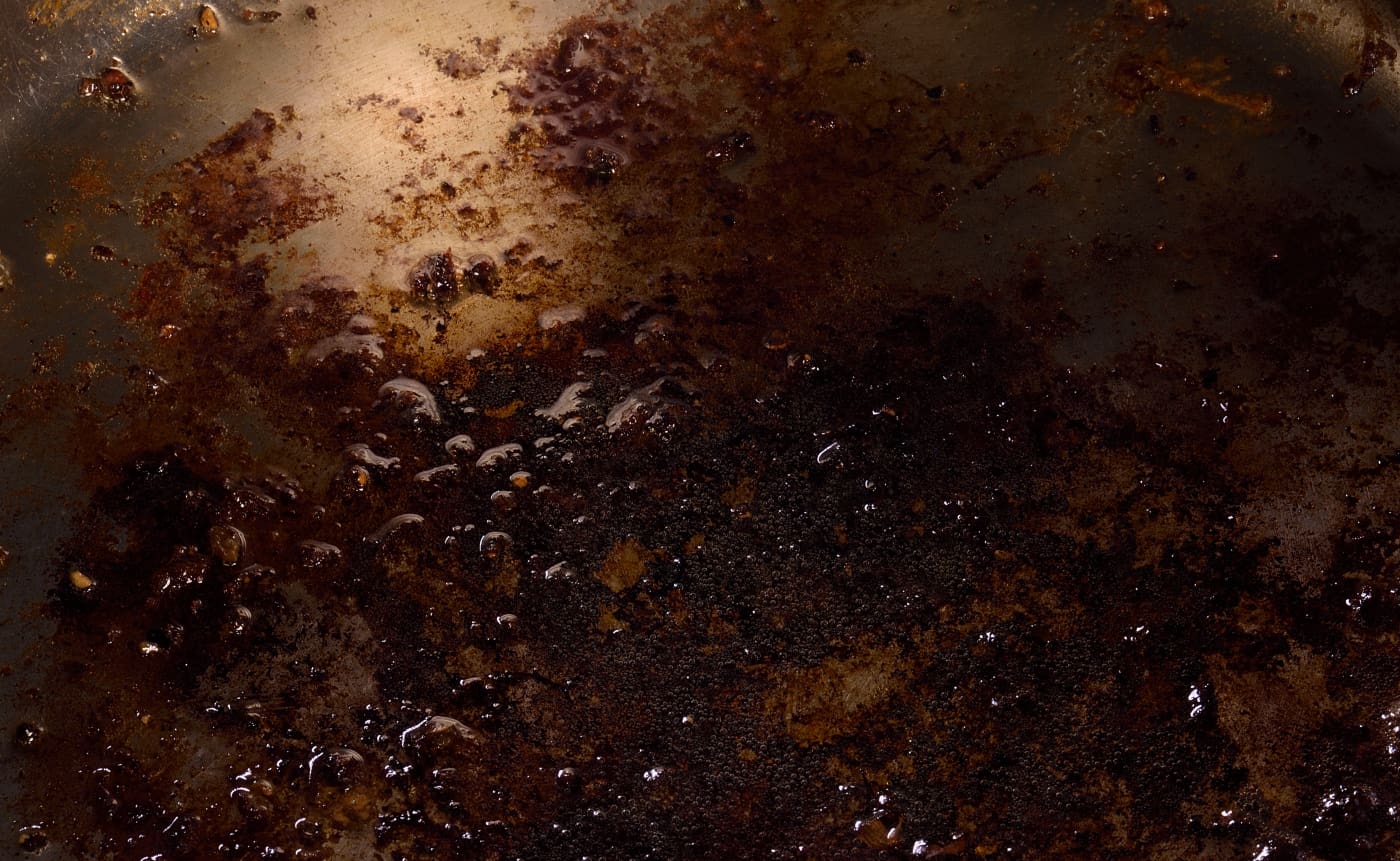
Note that the pan has accumulated a considerable crust. This will provide a lot of color and flavor to the sauce.

Add the 4 oz./120 g tomato sauce to the pan. It should sizzle and steam.

Stir occasionally as the tomato sauce reduces and caramelizes.
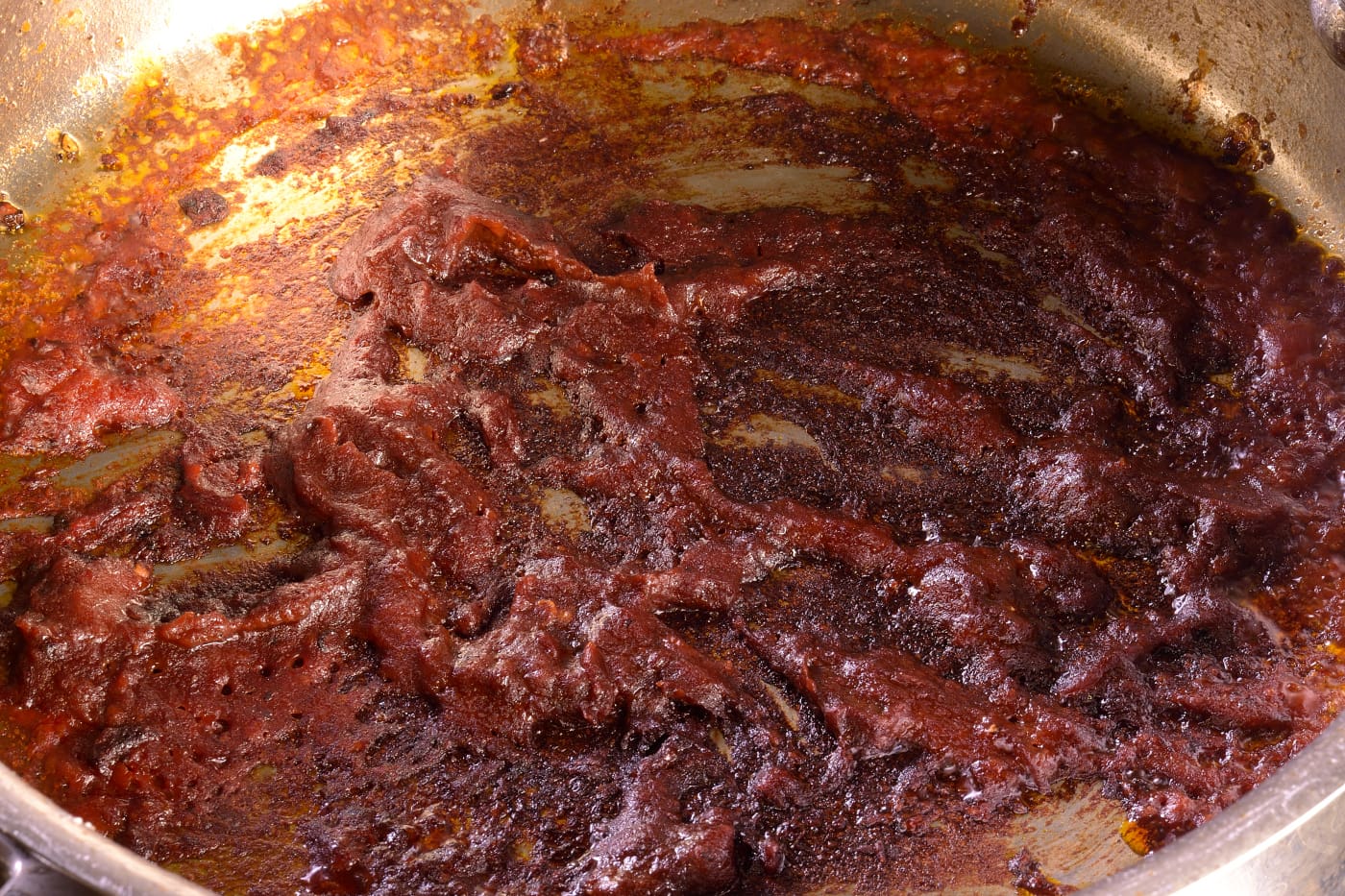
Eventually the tomato will darken to this extent. It should continue to form a crust on the bottom of the pan.
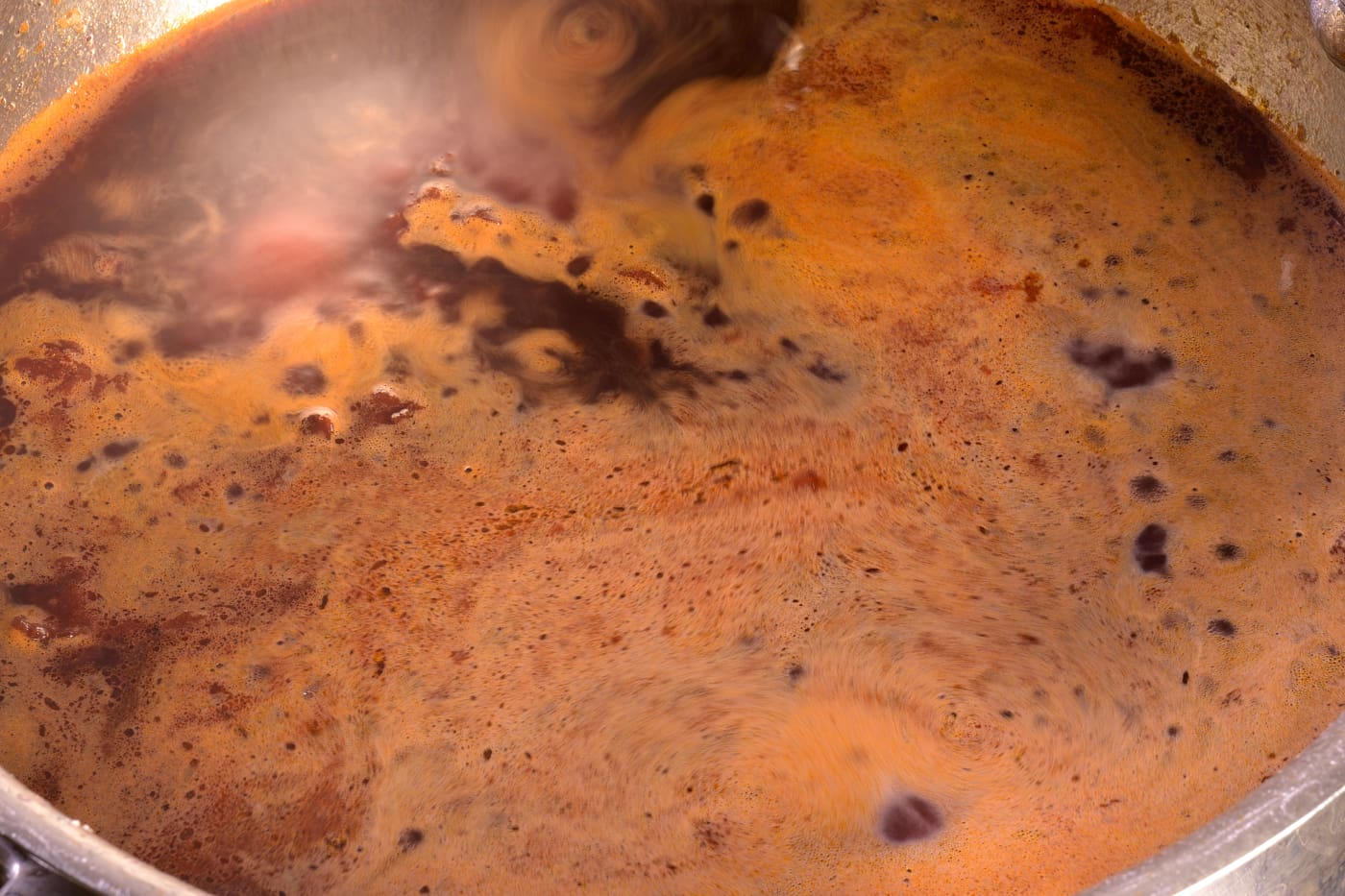
Add the 2 cups/450 ml red wine to the pan.
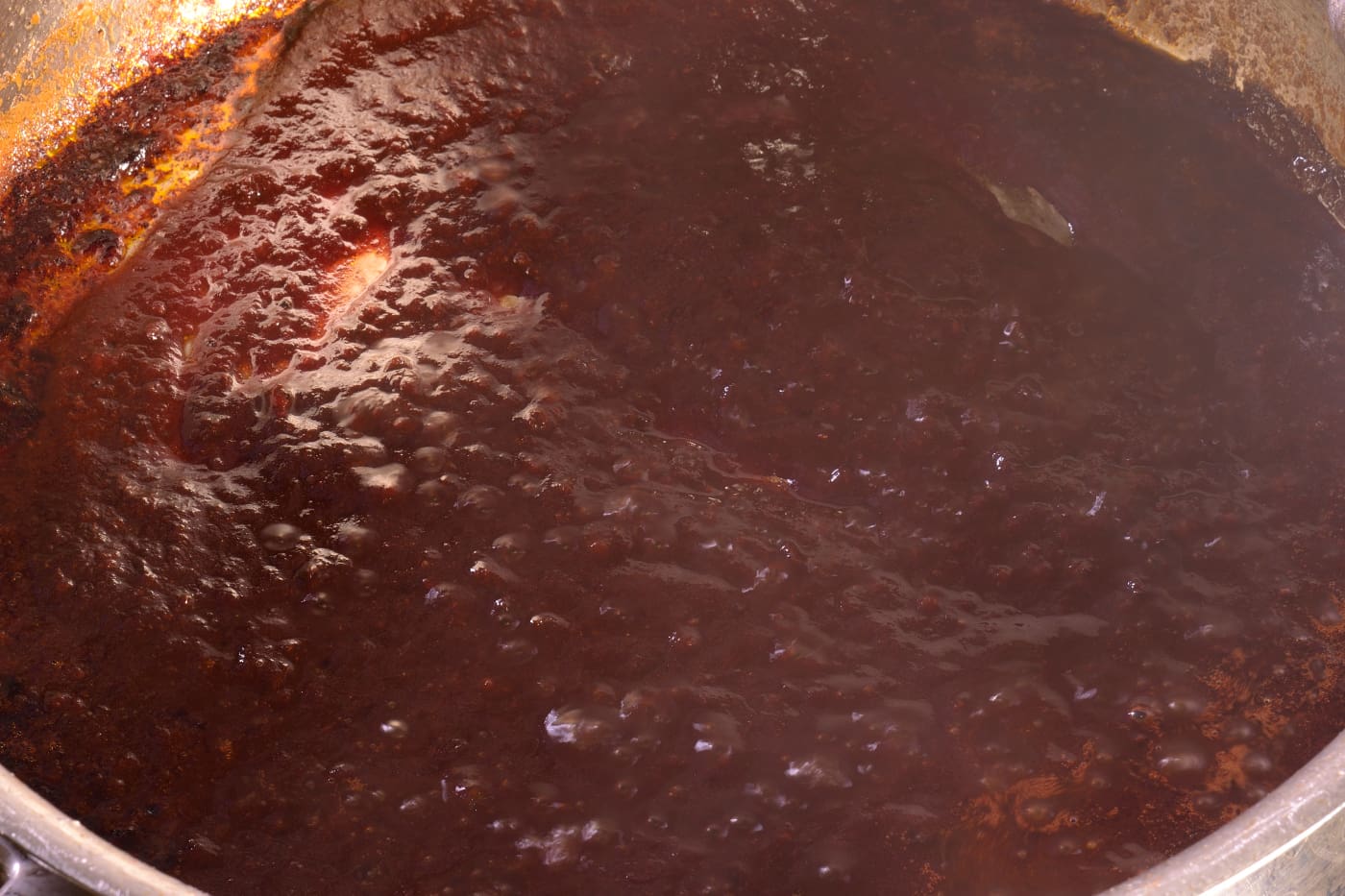
Reduce completely–failure to do so may result in a purple sauce.
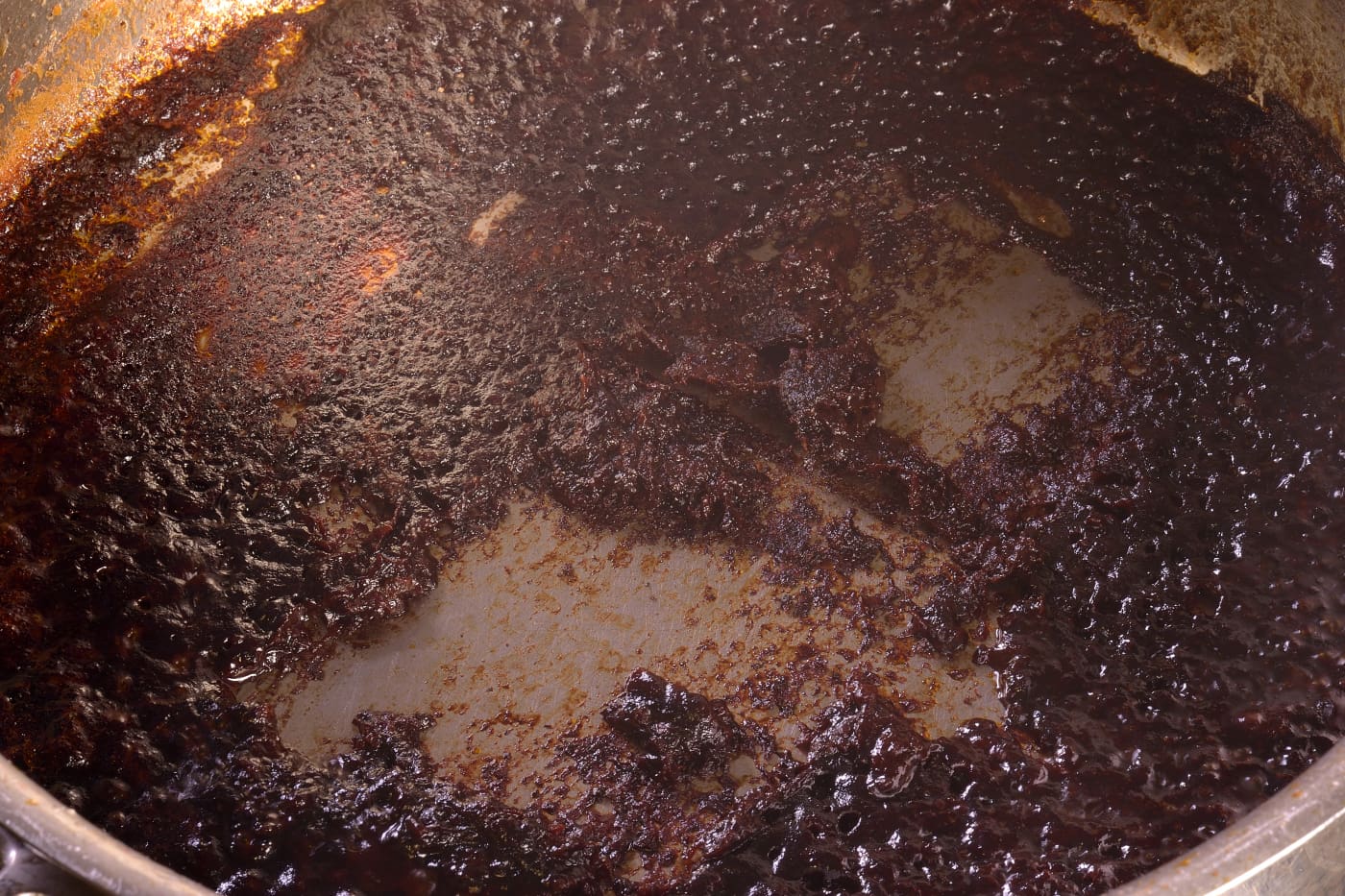
Reduce the mixture to almost nothing–this deglazing process will remove the drippings from the bottom of the pan. Remove from heat.
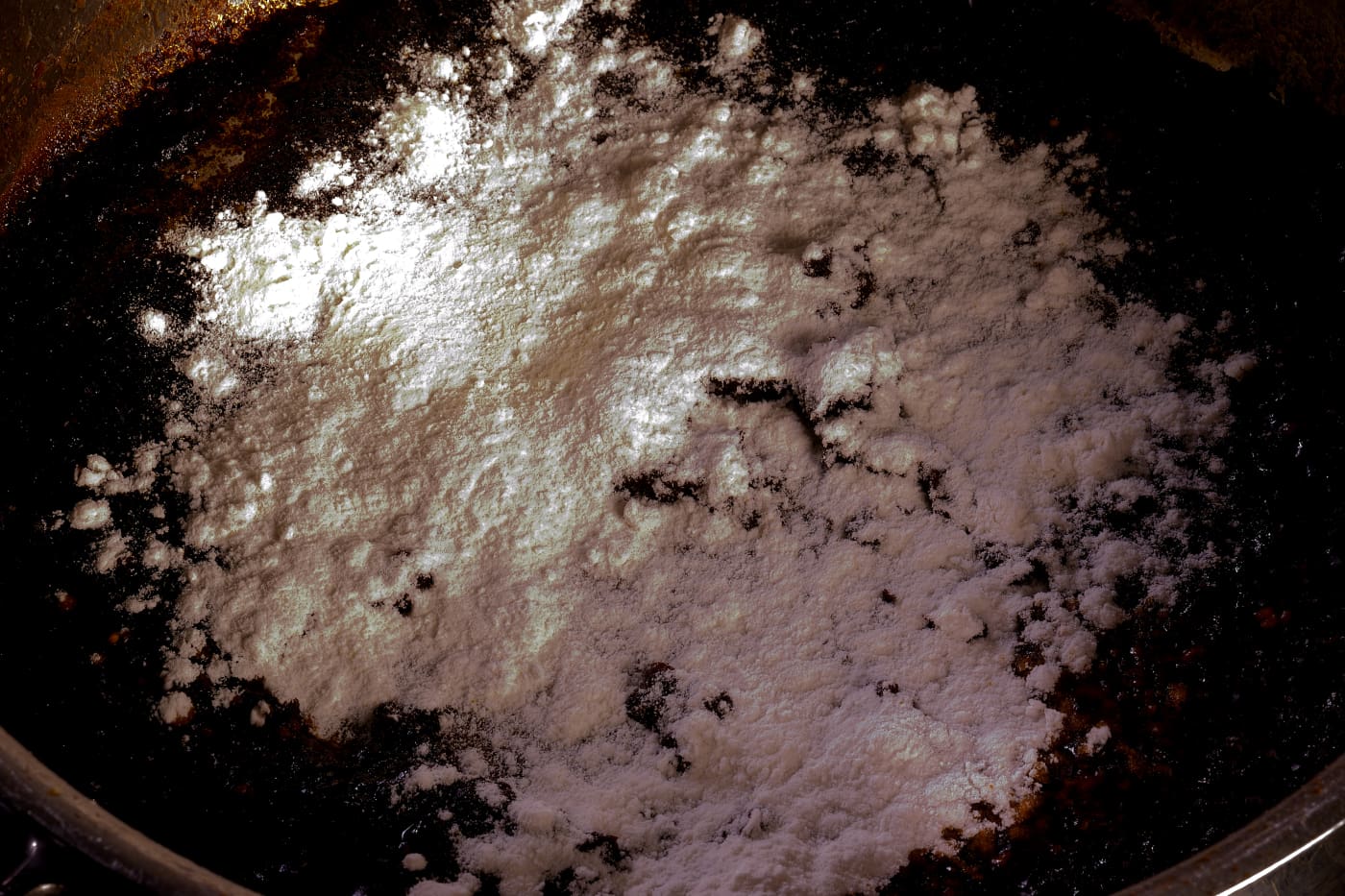
Add just enough flour to absorb the moisture in the pan. DO NOT COOK.
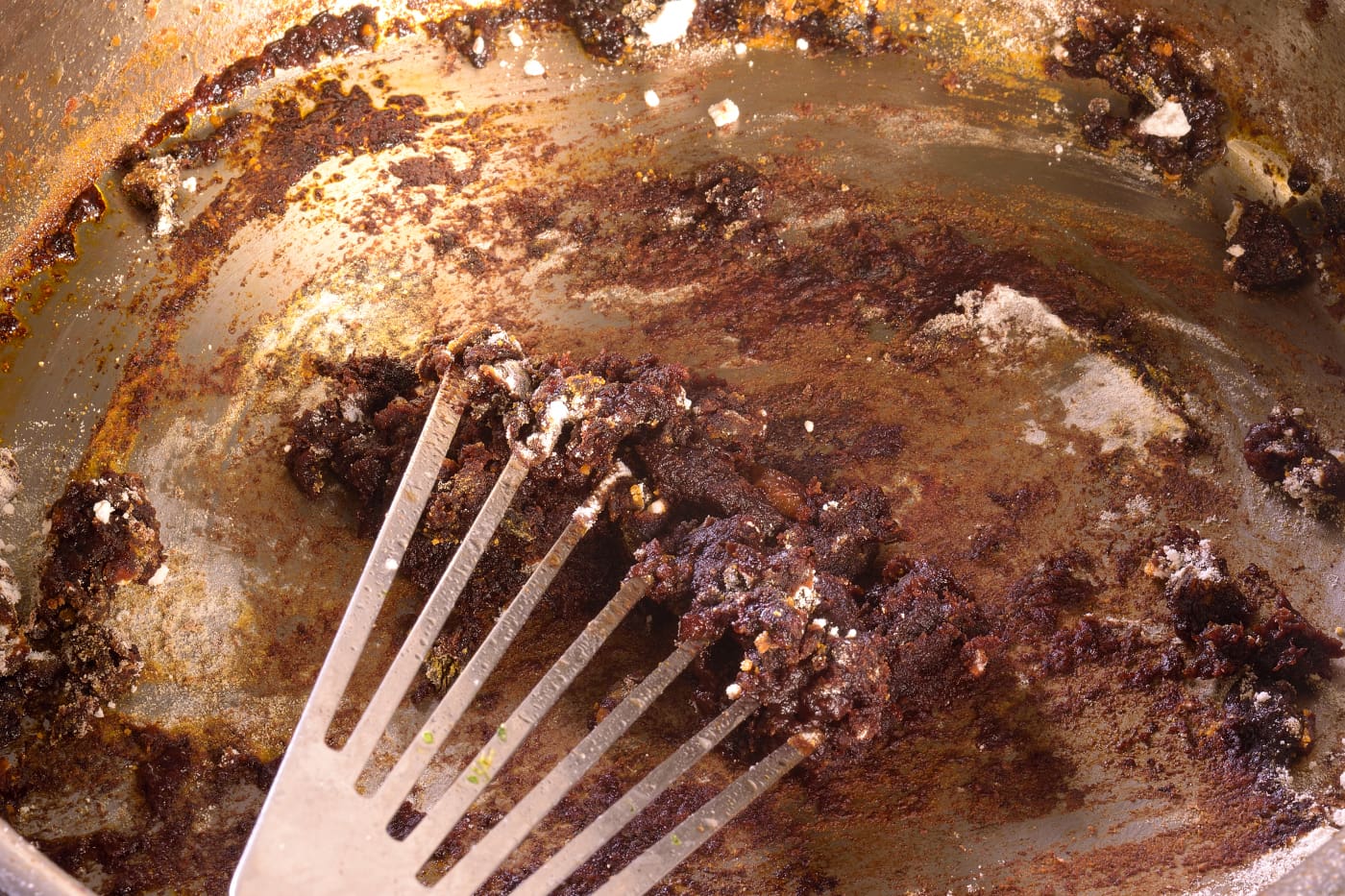
Approximately 1 oz/30 g.
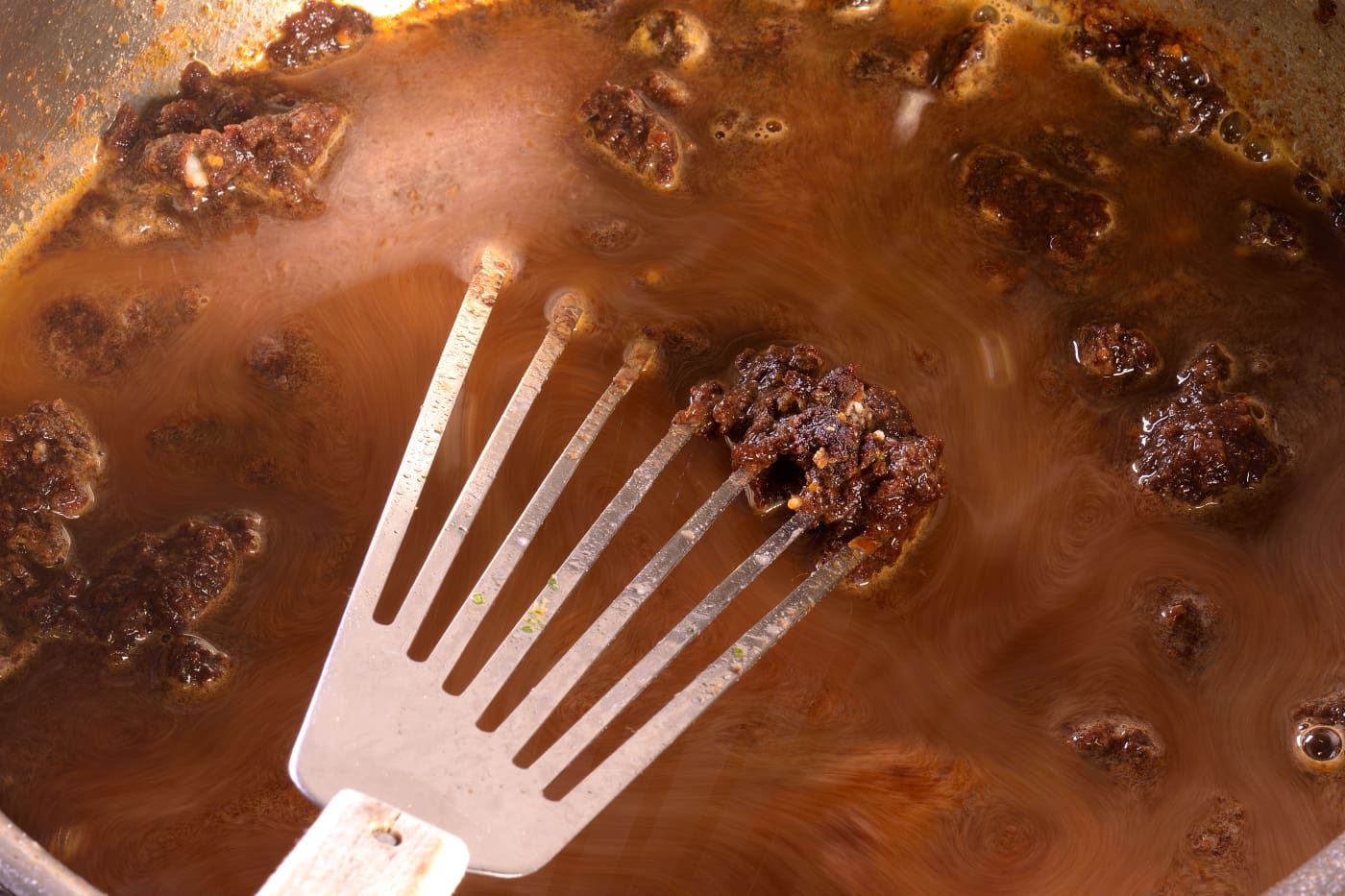
Turn the burner on again and add 1 cup/225 ml of cold water. Using cold water will prevent the thickening paste from clumping instead of dissolving. Use a spatula (or a whip) to incorporate the paste. It will begin to thicken immediately.
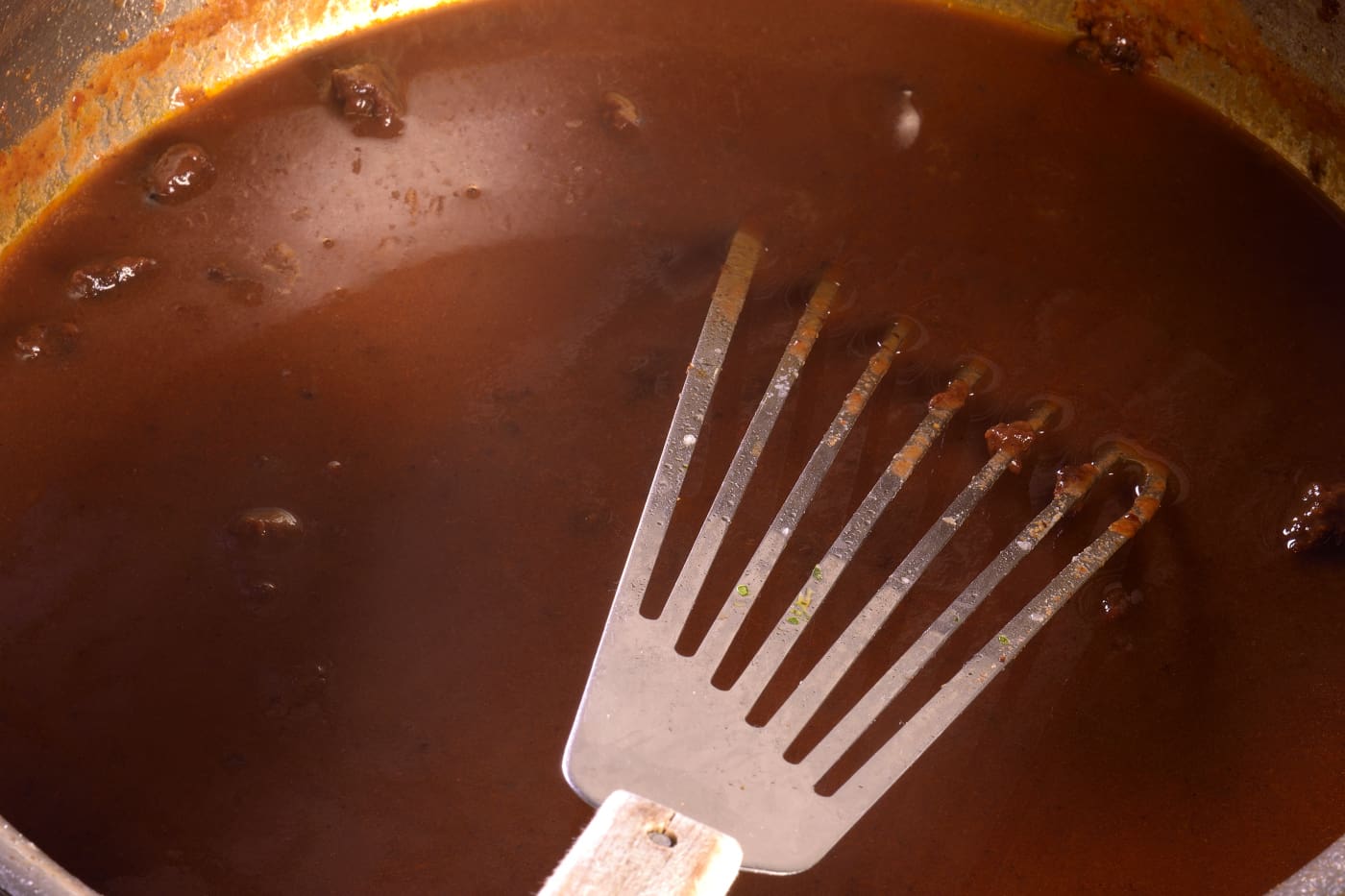
Continue stirring as the paste dissolves and the sauce comes to a simmer.

Add another cup/225 ml cold water, continue stirring.
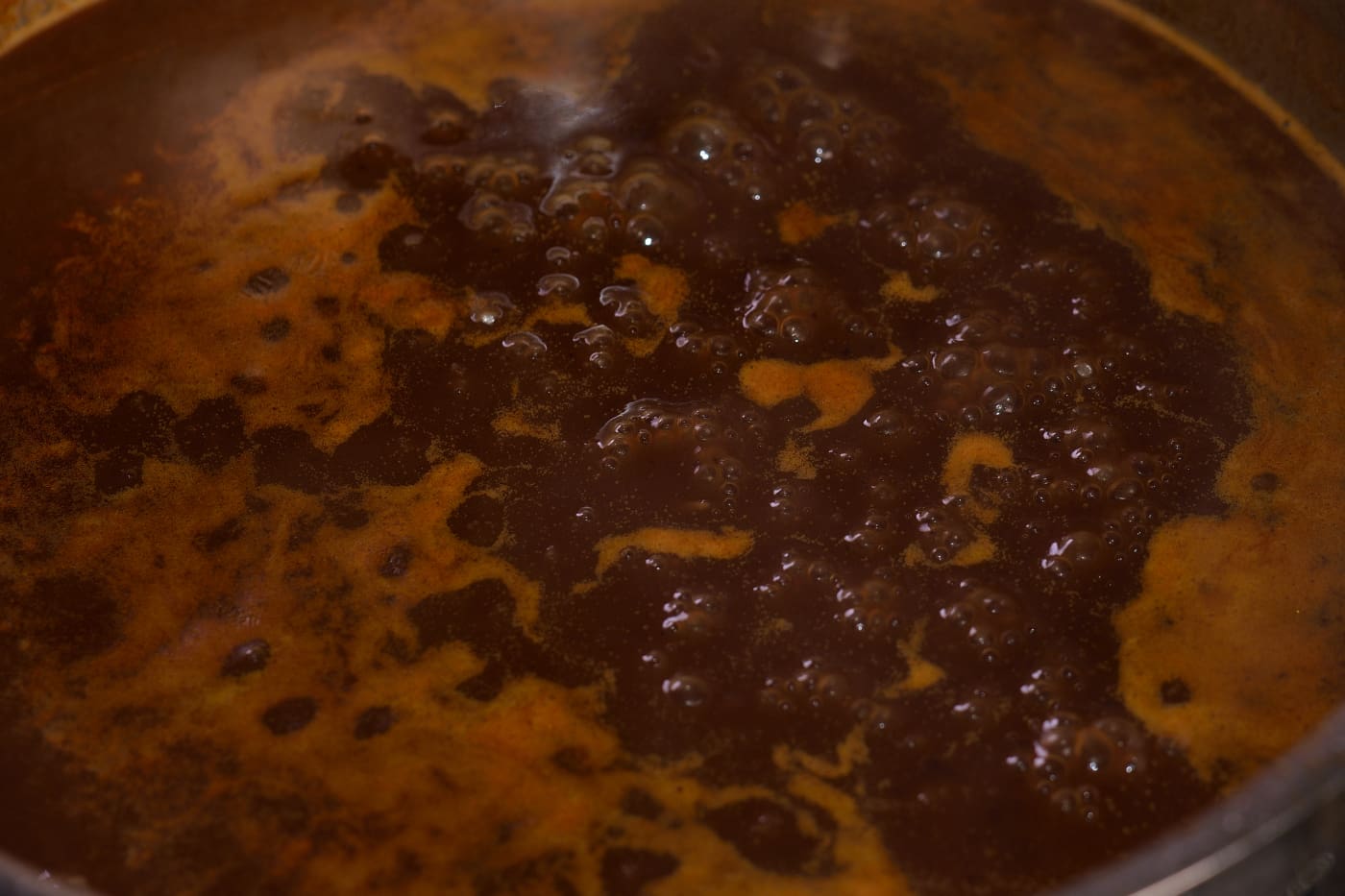
Return to simmer.

Continue to simmer for ten minutes until the sauce is slightly thickened. The sauce may be strained at this point if desired.
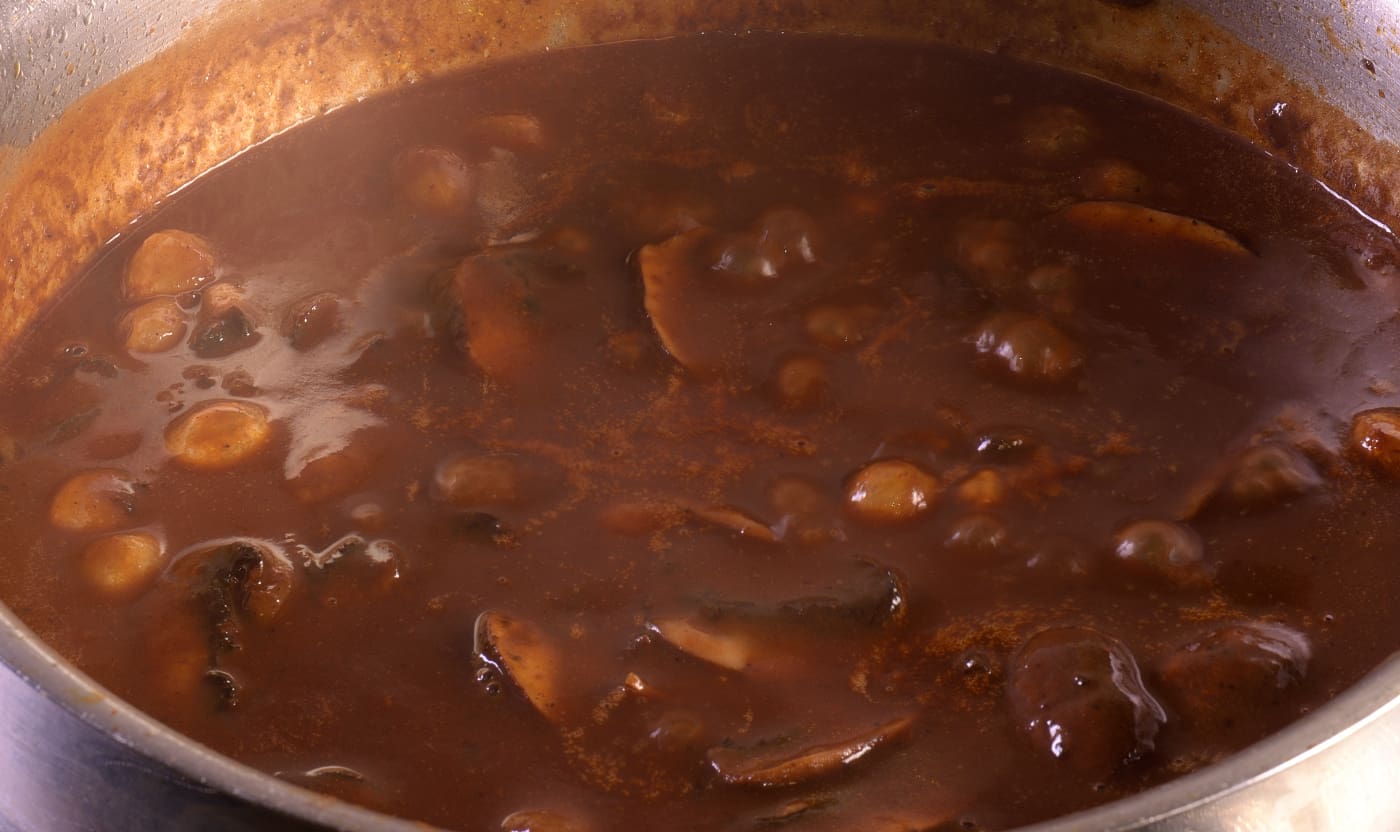
Add the reserved mushrooms and the pearl onions. Taste the sauce with a teaspoon and correct the seasoning if necessary.
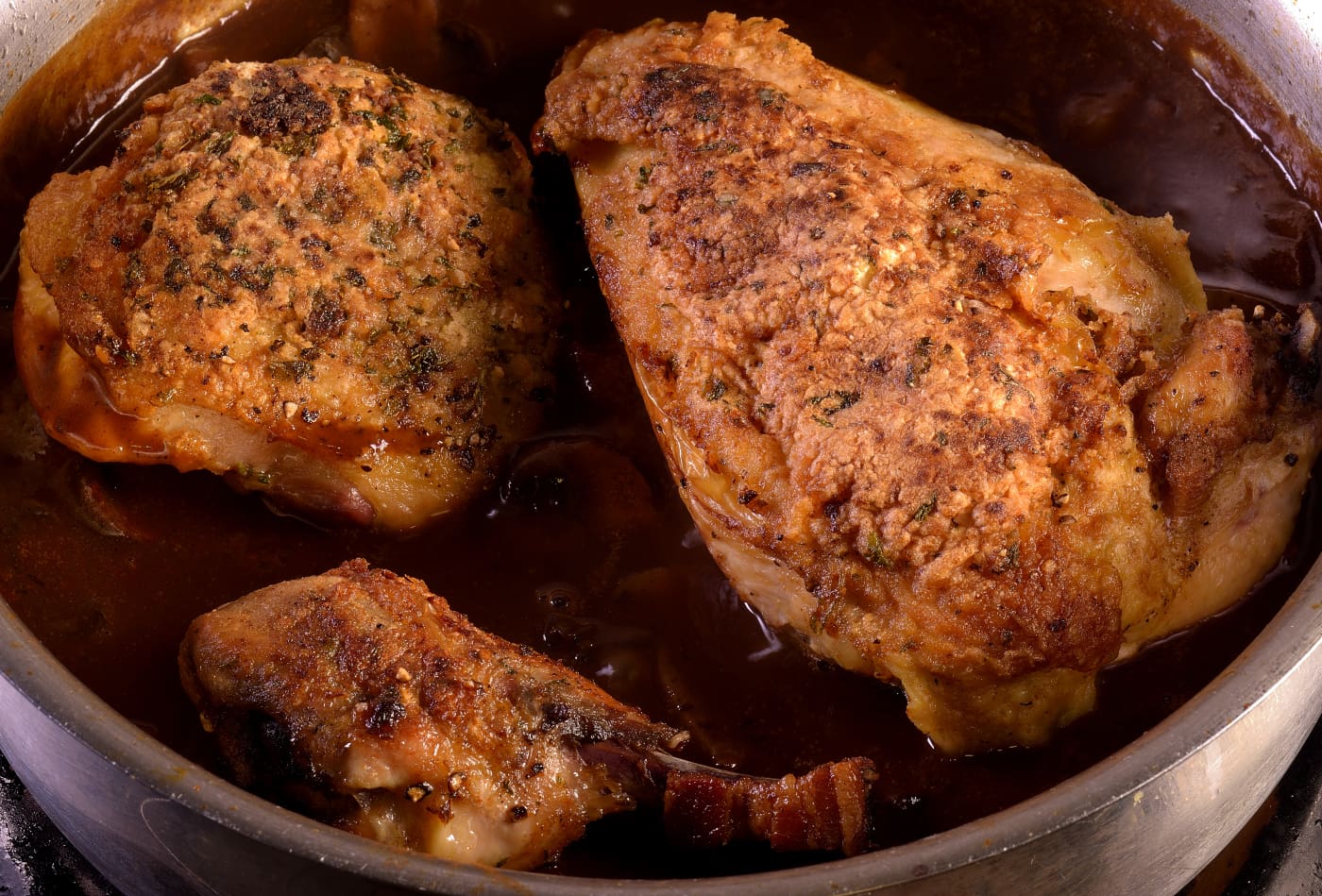
Add the chicken to the sauce but do not return to heat. Cooking or simmering the chicken in the sauce is a common practice but it can make the chicken dry and break the sauce. No flavor will pass into the chicken at this point, but juices will come out if exposed to a hot liquid medium.
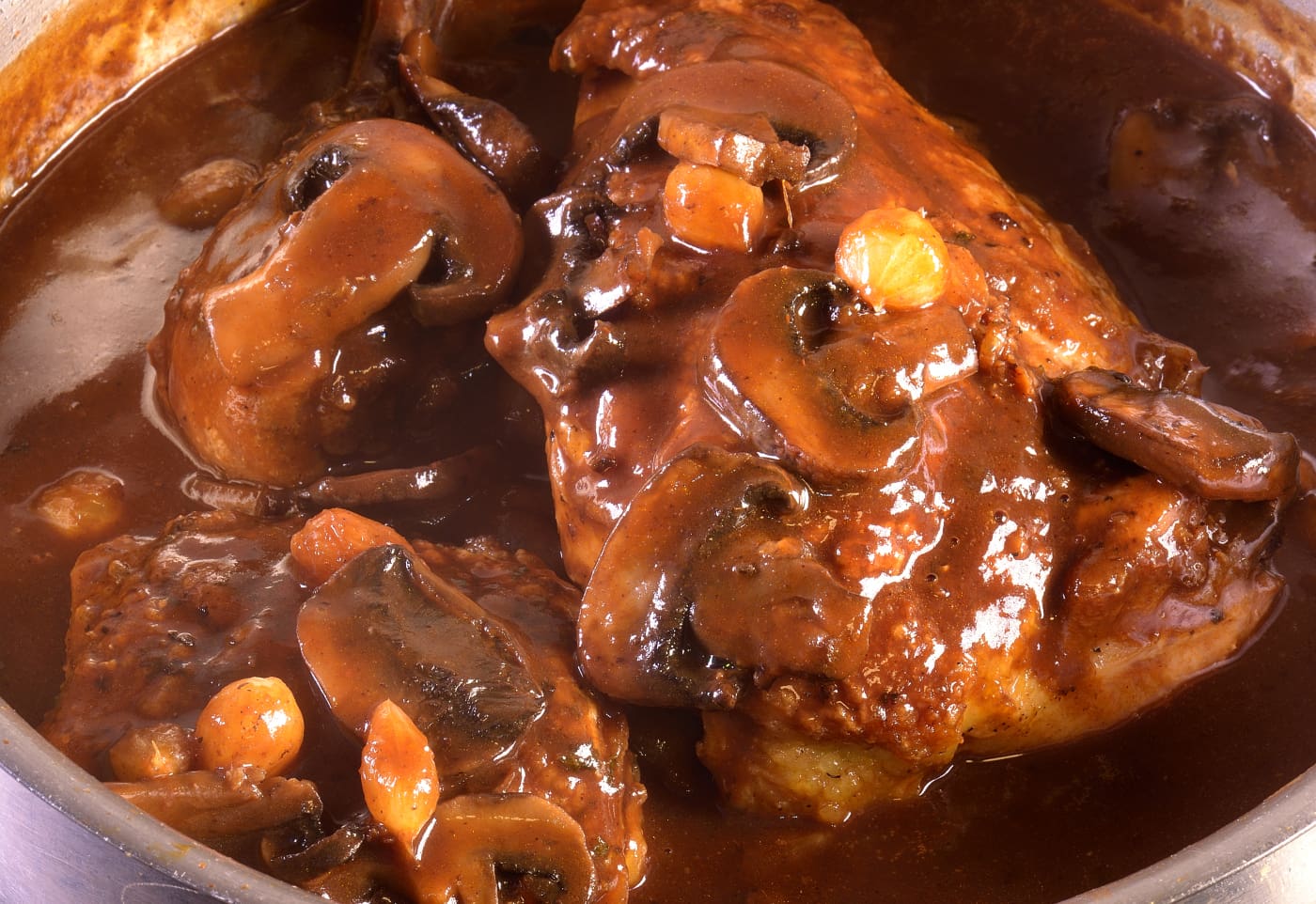
Coat the chicken with the mushroom sauce.

Arrange the chicken on your heated platter. Ladle some of the mushroom sauce over the top and then sprinkle the crisp bacon and tomatoes over it.

Sous vide makes juicy perfection easier!
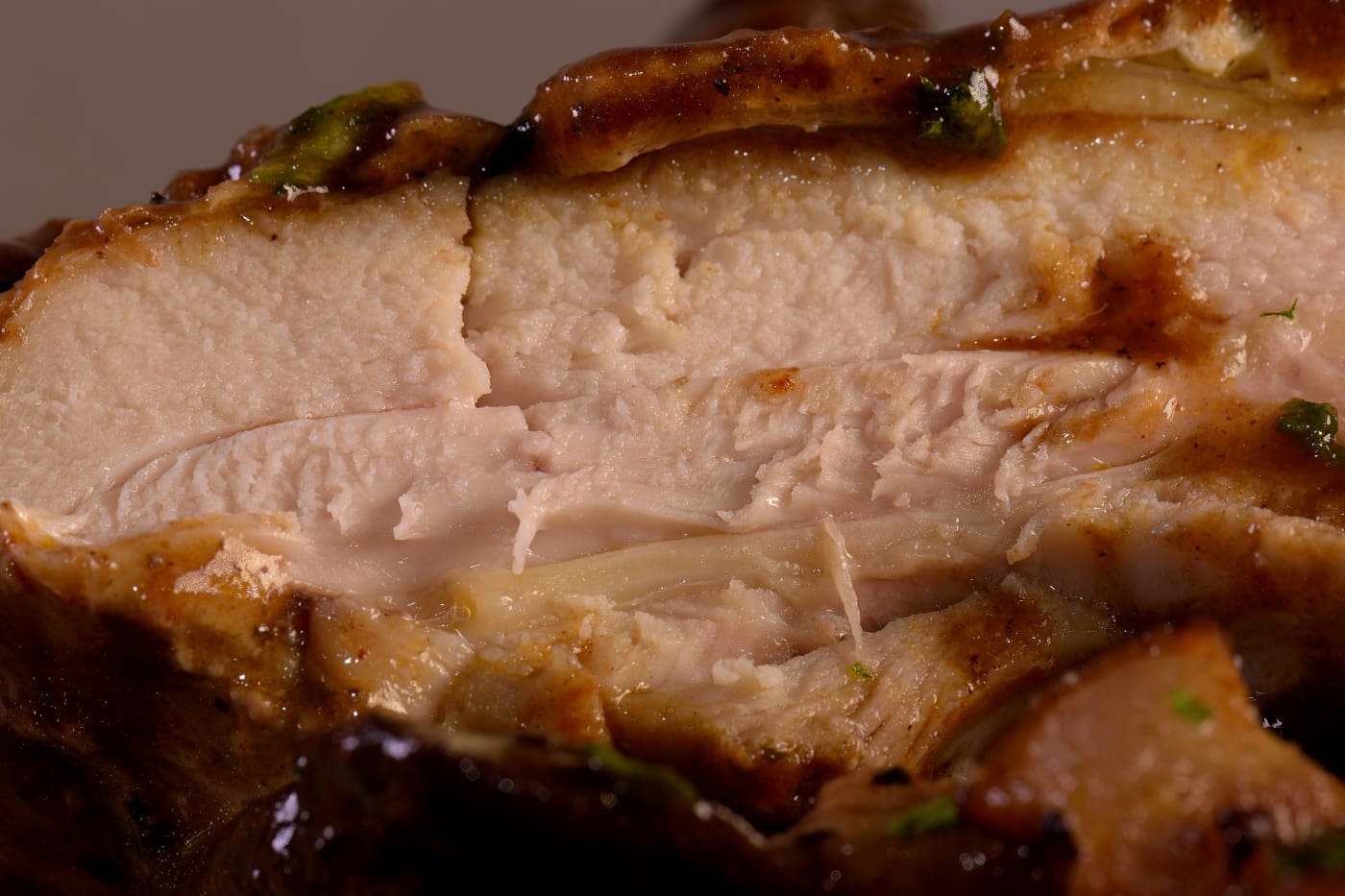
Even the dark meat benefits from the hybridized processing.
Norm King

“Nice legs.”
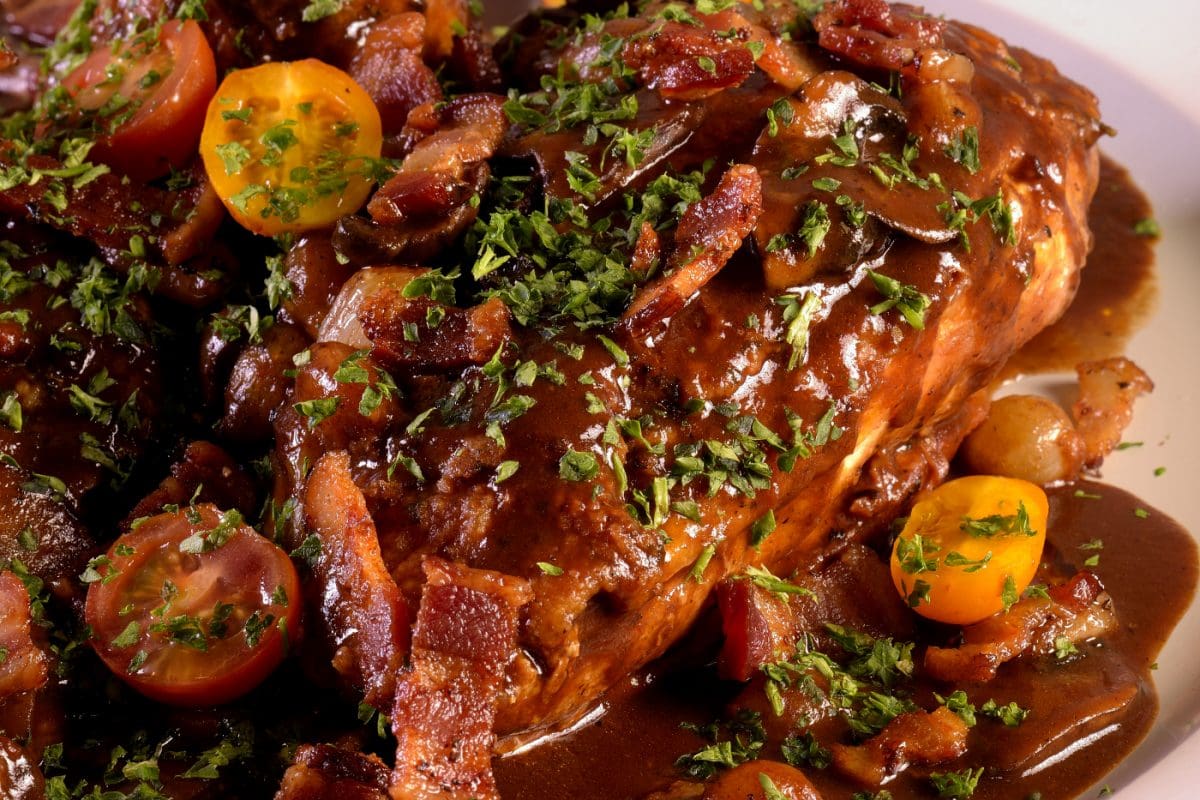
You acctually make iit seem soo easy with your presentation but I find
this topic to be actually something which I hink I would never understand.
It sees too complicated and very broad for me. I am looking forward for your next post,
I’ll try to get the hang of it!
Feel free to suurf to my webpage: https://Spincasino.Evenweb.com/
Thanks for finally writing about > Sous Vide: Coq au Vin 2021 – LIPAVI Ww.love66.me
I’m extremely impressed together with your writing talents and also with the structure in your blog.
Is this a paid subject or did you modify it your self?
Anysay keep upp the excellent high quality writing,
it’s raare to peer a great weblog like this one these days..
My web page; 157.230.37.164
obviously like your web-site however you need to check the spelling on quite a few
of your posts. Several of them are rife with spelling
issues and I to find iit very bothersome to tell the reality on the other hand I will certainly come againn again.
Feel free to surf to my page … http://htcclub.pl/member.php/241924-Sergilk
Your mode off describing everything in this paragraph is in fact nice, every one can simply
understand it, Thanks a lot.
Here is my blog post; post456056
Greetings! Quick question that’s totally off topic. Do you know how
tto make your site mobile friendly? My site looks weird when viewing from my apple iphone.
I’m trying to find a template or plugin that might be able tto fix this
problem. If you have any suggestions, please
share. Many thanks!
Here is my website; http://millefori.altervista.org/forum/viewtopic.php?f=19&t=198516
These are actually fantastic ideas in about blogging. You have
touched some fastidious points here. Anyy waay keep up wrinting.
my web-site studiumvusa.com
Write more, thats all I have to say. Literally, iit seems as though you relied on the
video to ake yur point. You clearly know what youre talking about, why throw away your inntelligence on just
posting videos too your blkog when you could be giving us something enlightening to read?
Here is my homepage; http://Www.Fvrc.Ru
Why viewers still make use of to read news papers when in this technological globe everything
is accessible on web?
my siute – http://24tov.Com.ua/forum/viewtopic.php?f=9&t=417030
Hey there this is kind oof of off topic but I was wanting to
know if blovs use WYSIWYG editors orr if you have too manually code with HTML.
I’m starting a blog soon but have no cding know-how
so I wanted to get guidance from someone wiith experience.
Any help would be enormously appreciated!
My web page :: http://saubier.com/forum/member.php?u=837484
What Is Best Onlyfans Pornstar And Why Is Everyone Speakin’ About It?
Best Pornstars
Ten Things You’ve Learned In Kindergarden To Help You
Get Started With GSA SER Ranker Gsa Ser Ranker
10 GSA SER-Friendly Habits To Be Healthy gsa ser List
Ten Things You Should Not Share On Twitter male masturbator toy (Henry)
10 Books To Read On Sex Machine In My Area sex Machine shop (http://www.sorumatix.Com/)
5 Killer Quora Answers To Woodburning Stove woodburning stove
10 Myths Your Boss Has About Electric Fireplace
Wall Mounted Electric Fireplace Wall Mounted electric Wall hung fires
What Is What Is The Best Folding Mobility
Scooter To Buy? And How To Use It buy mobility scooter Batteries
Speak “Yes” To These 5 ADHD Titration Tips adhd dose Titration
Nine Things That Your Parent Taught You About ADHD Diagnosis Adults Adhd diagnosis adults